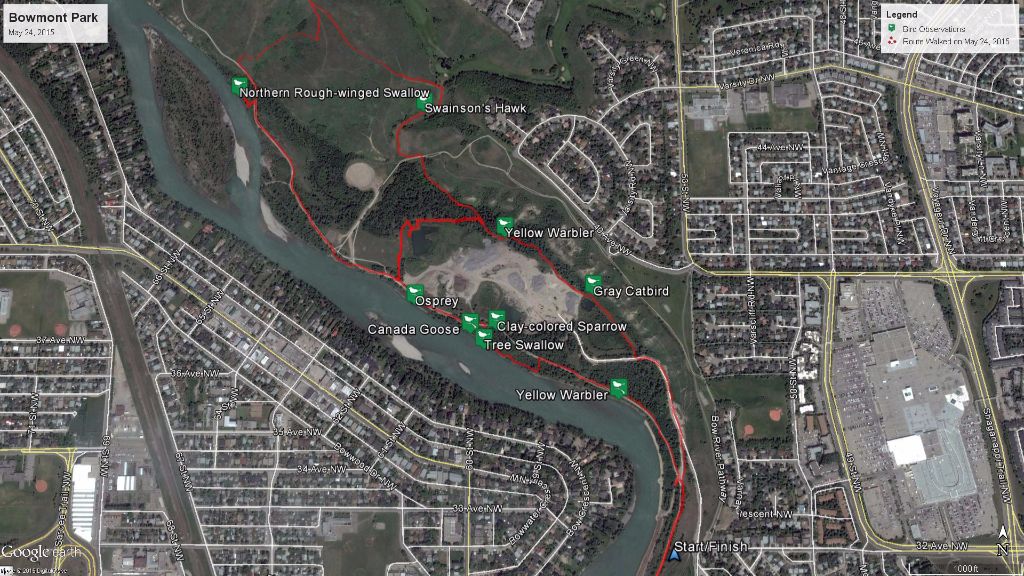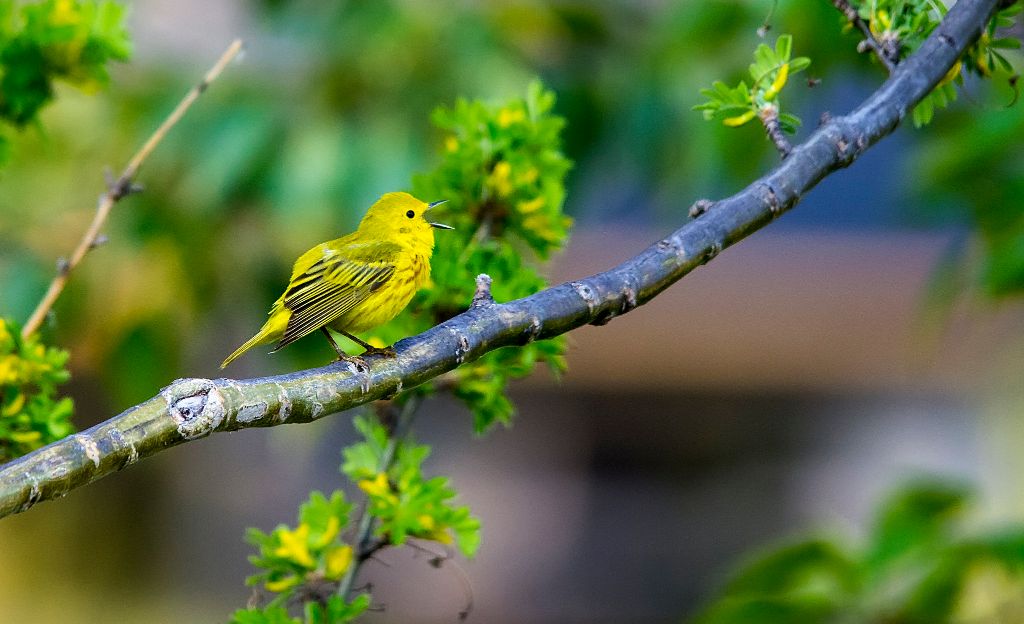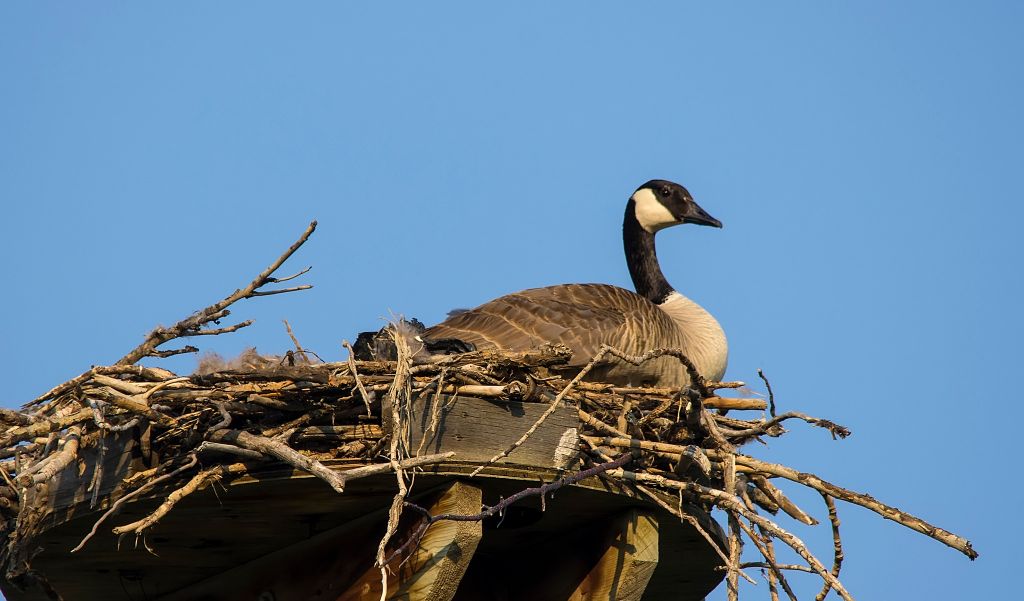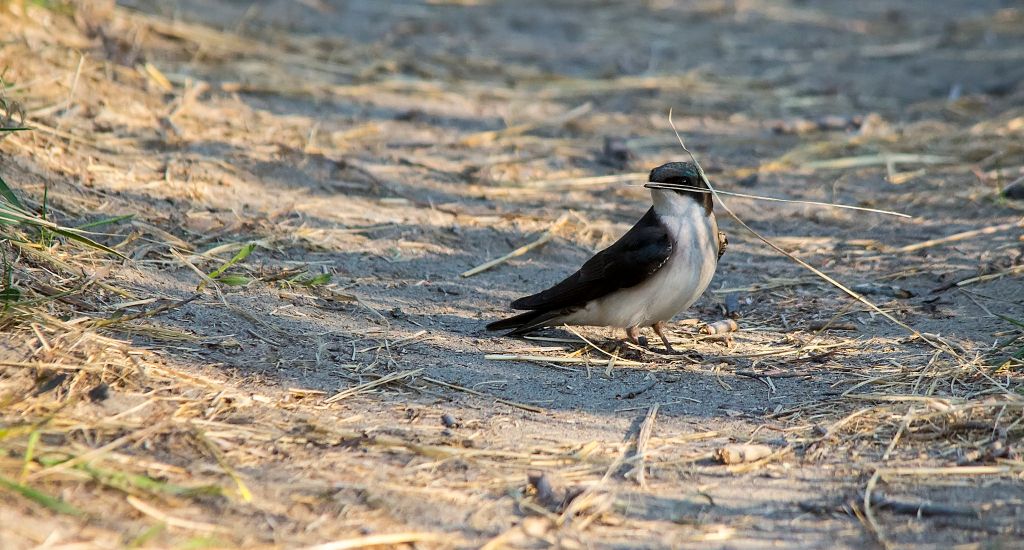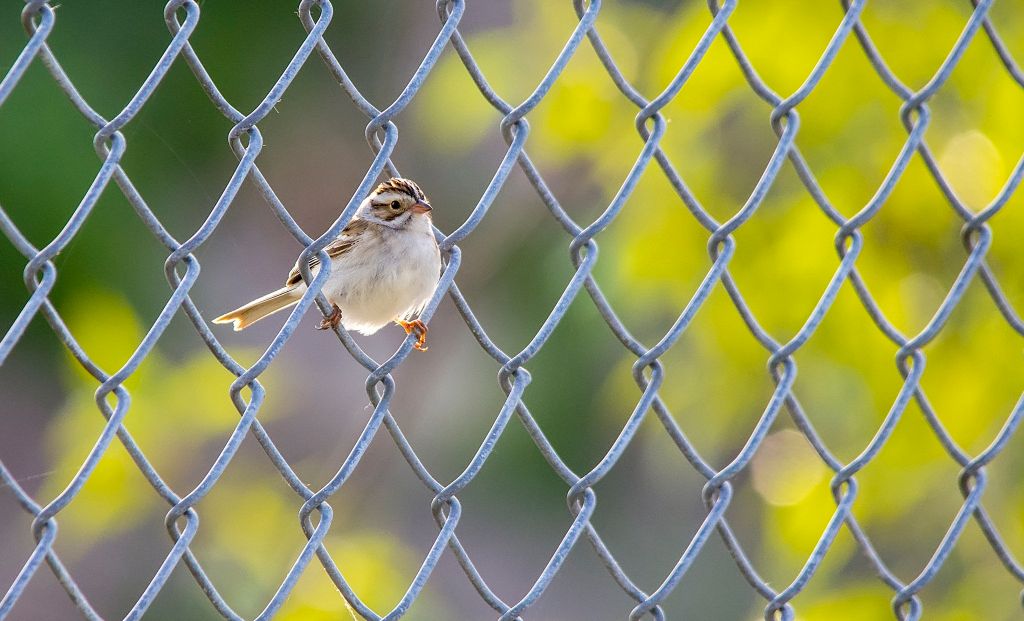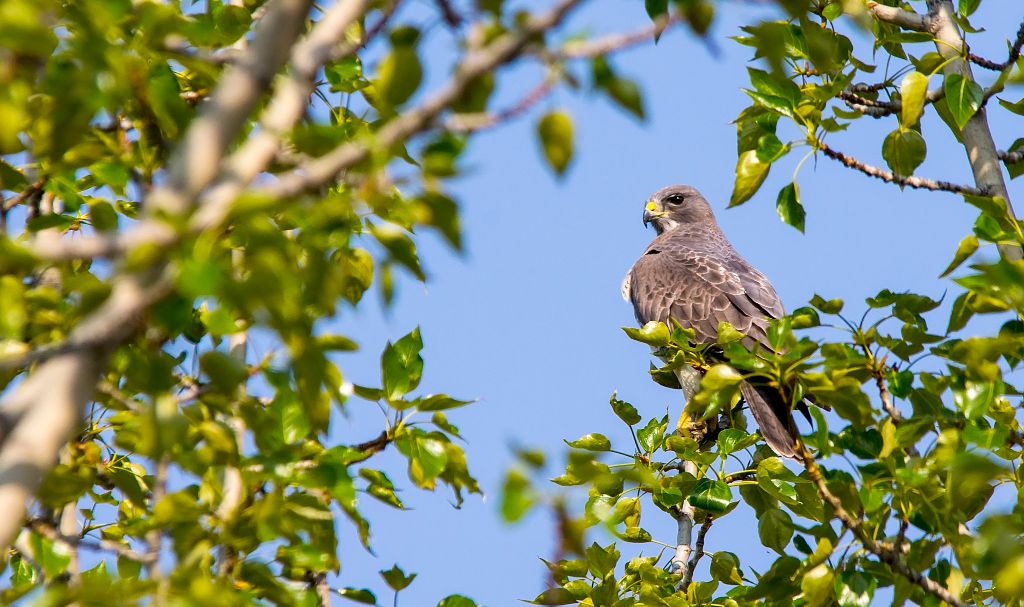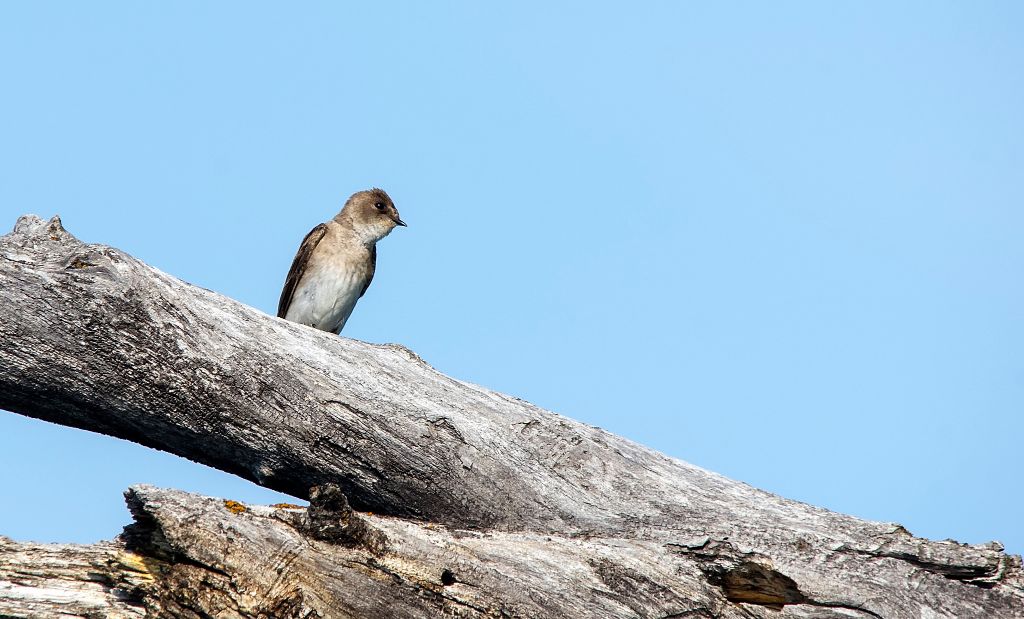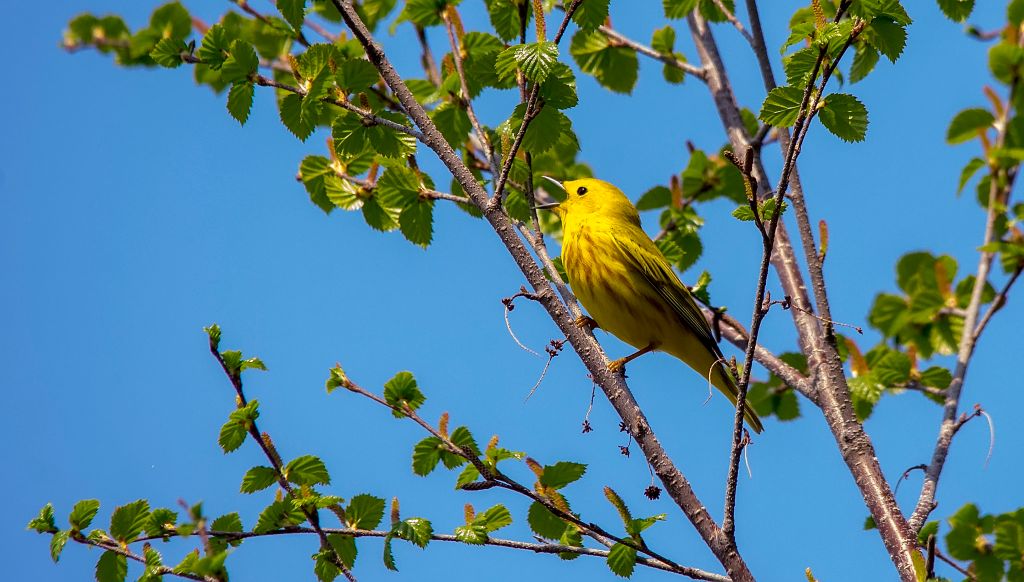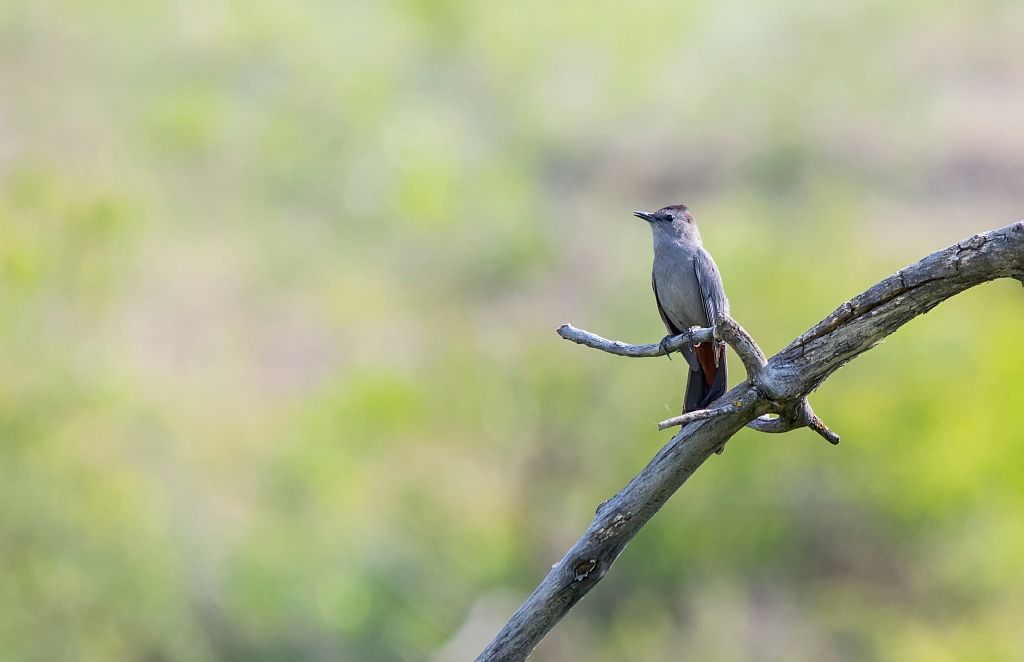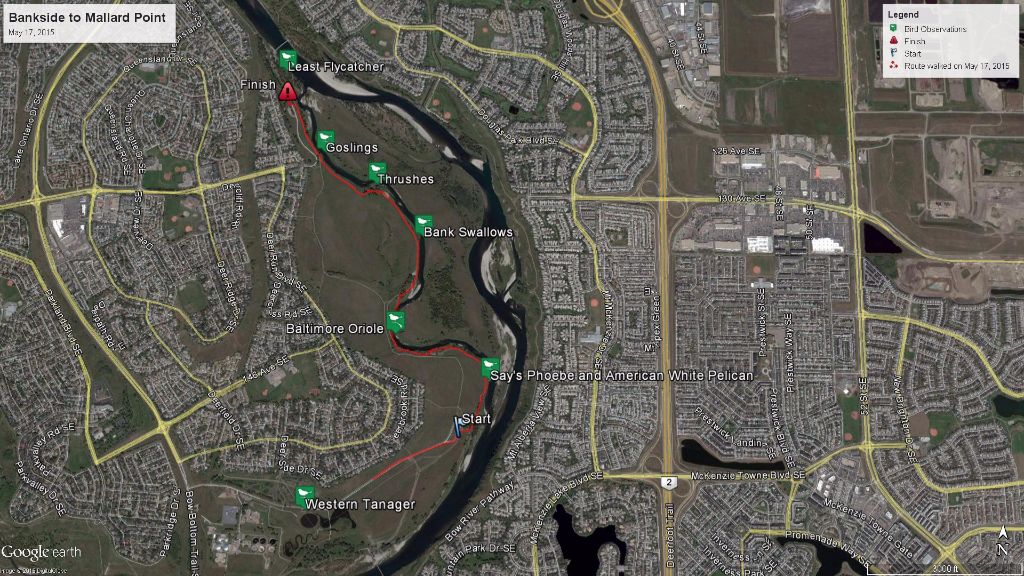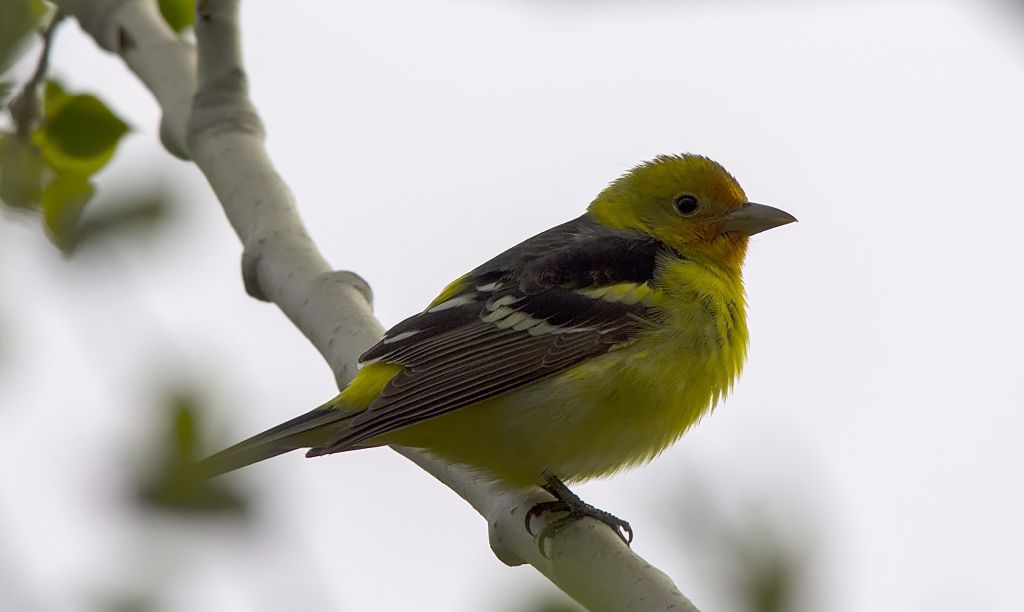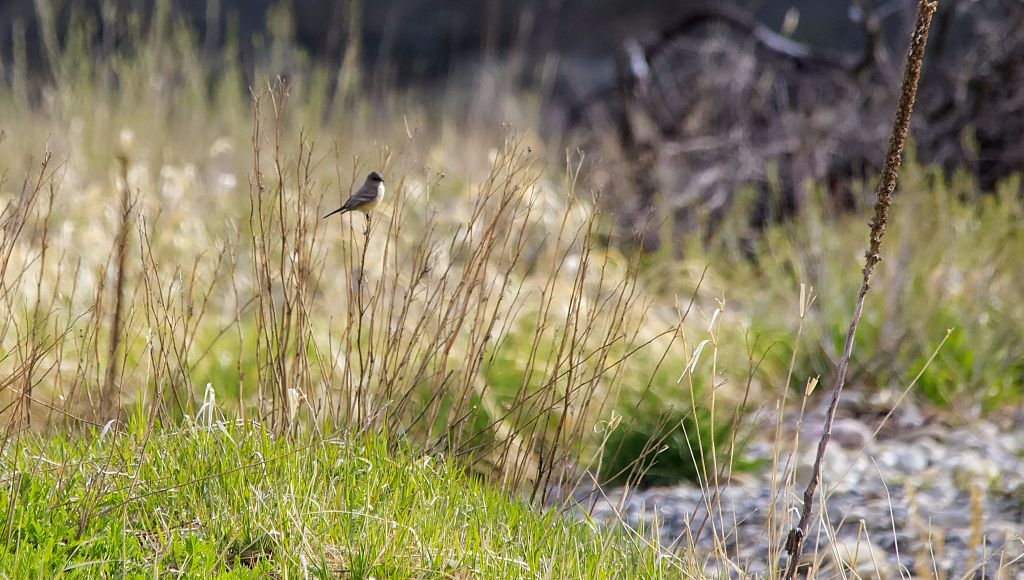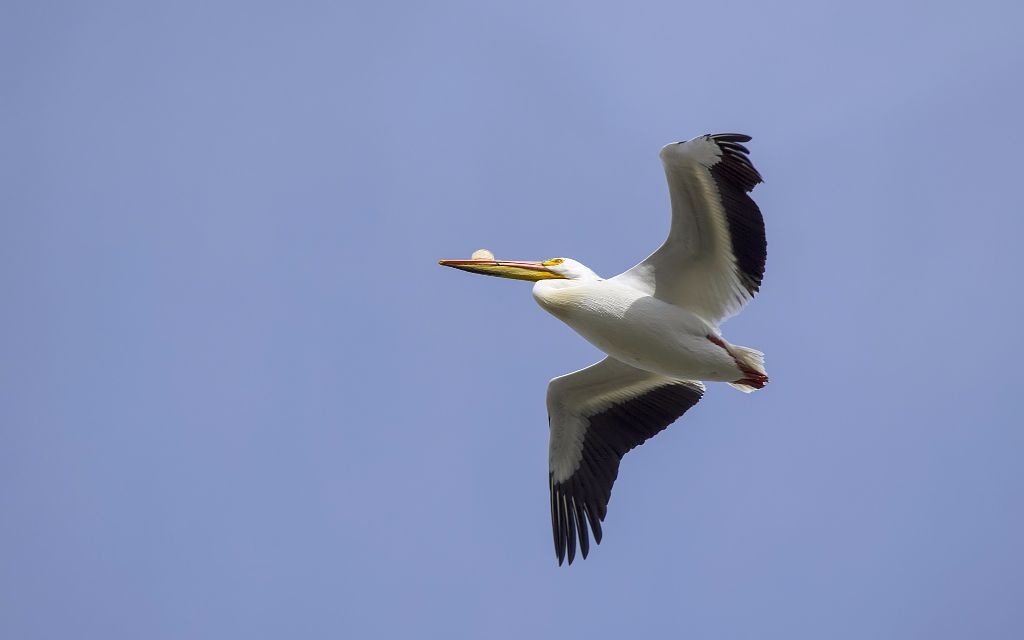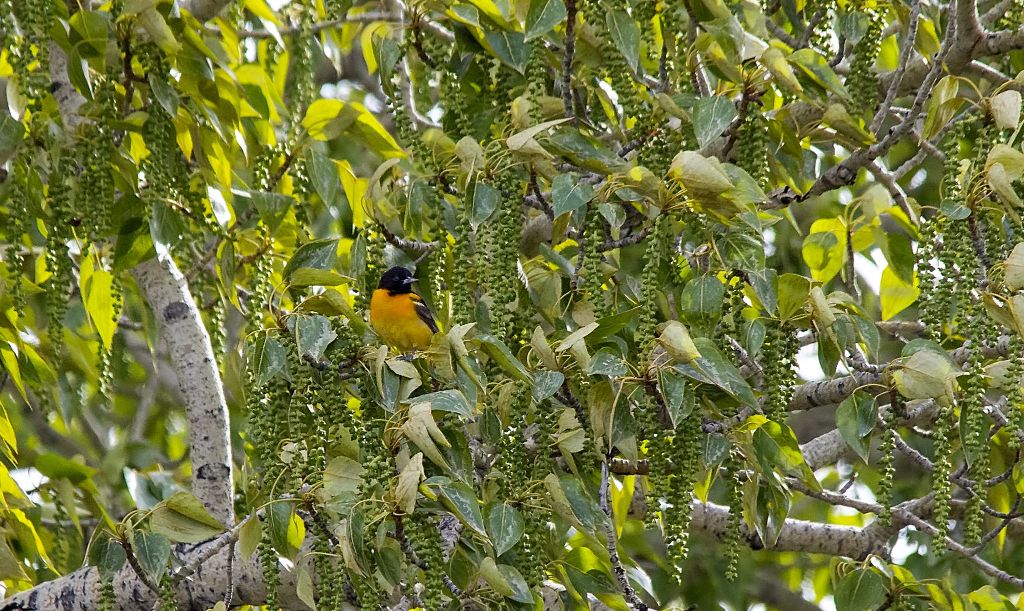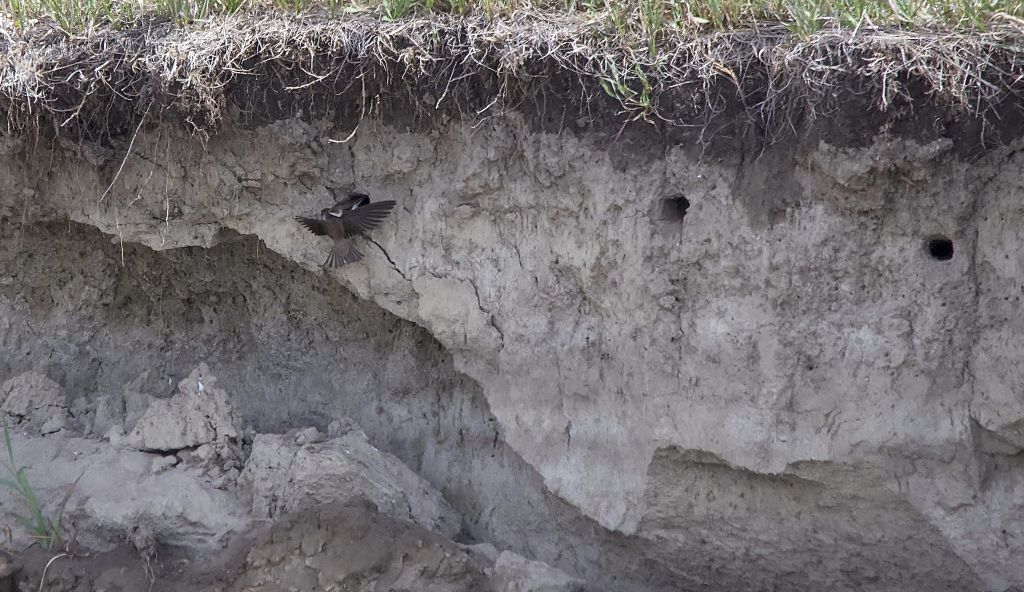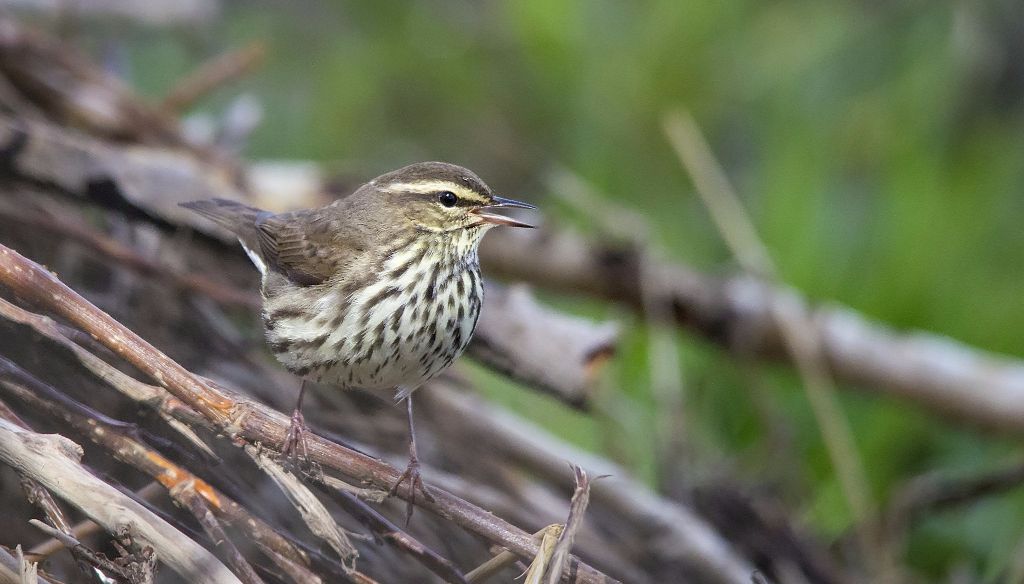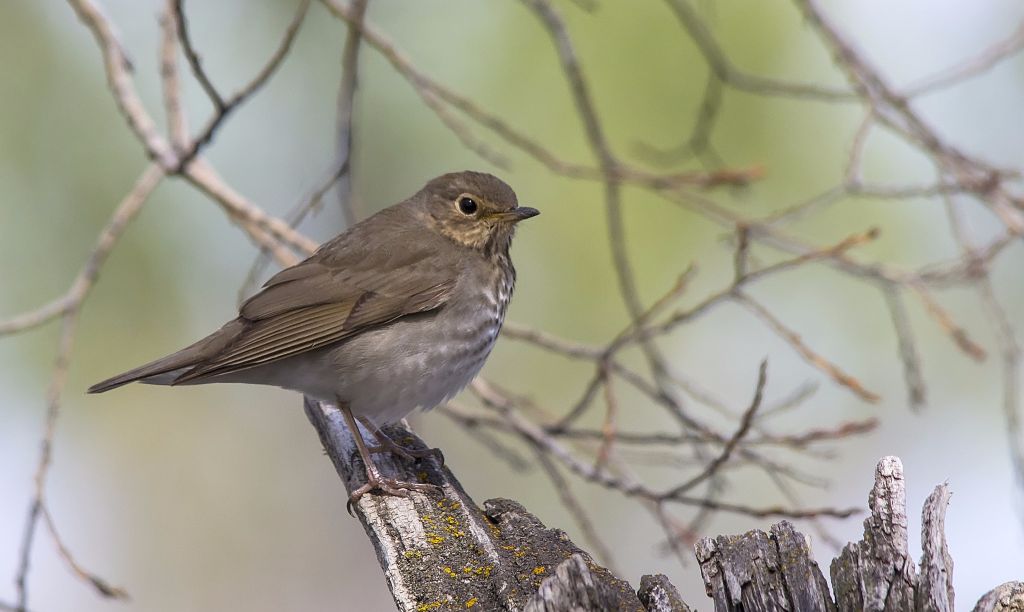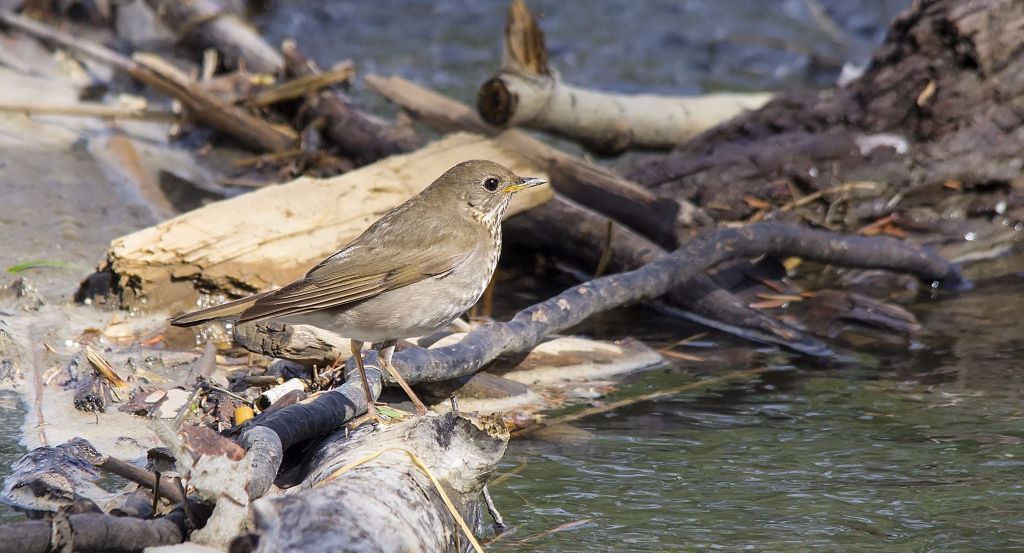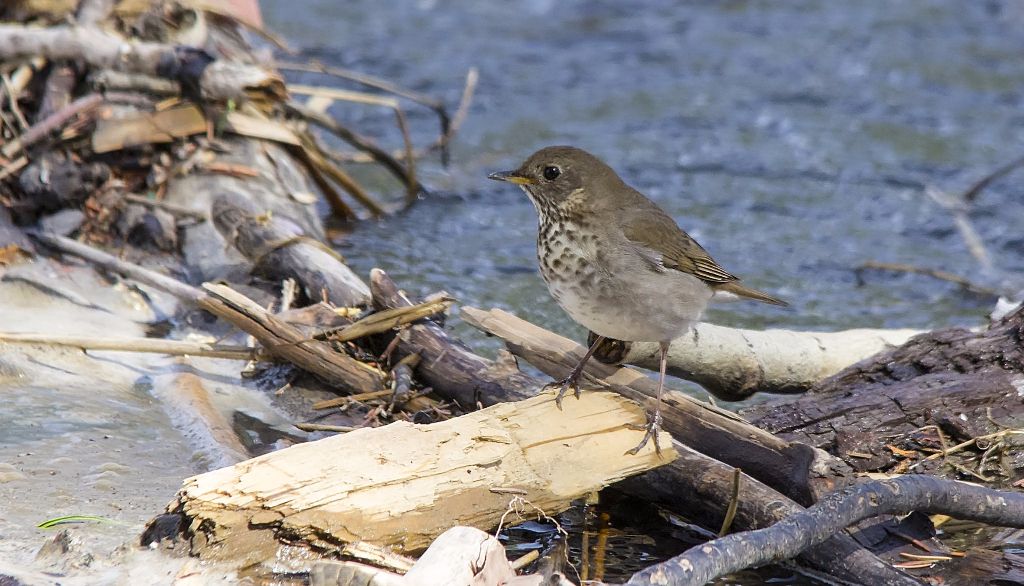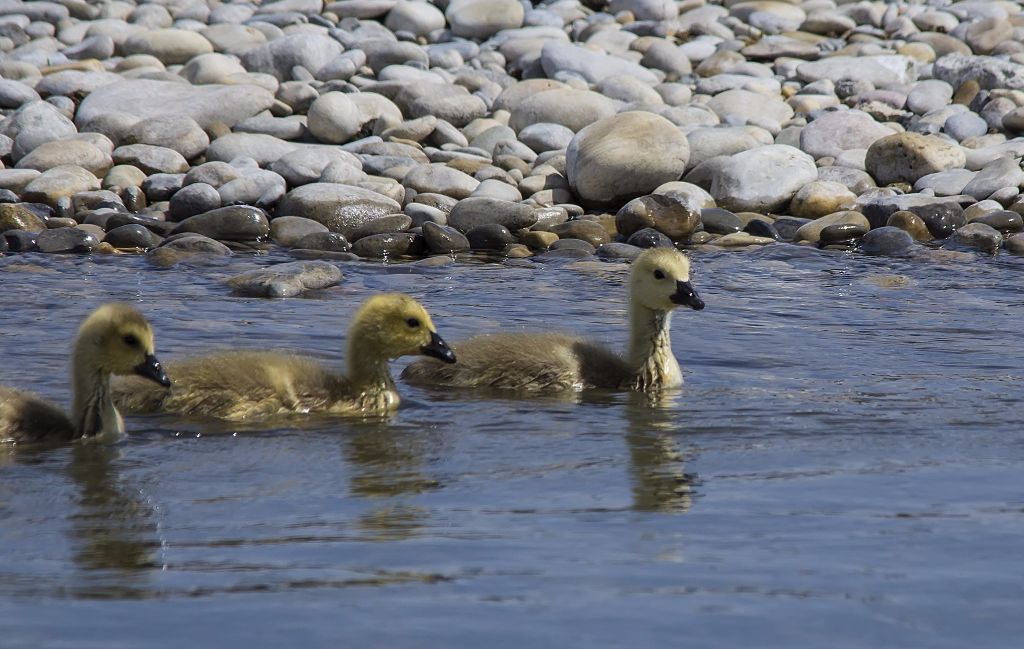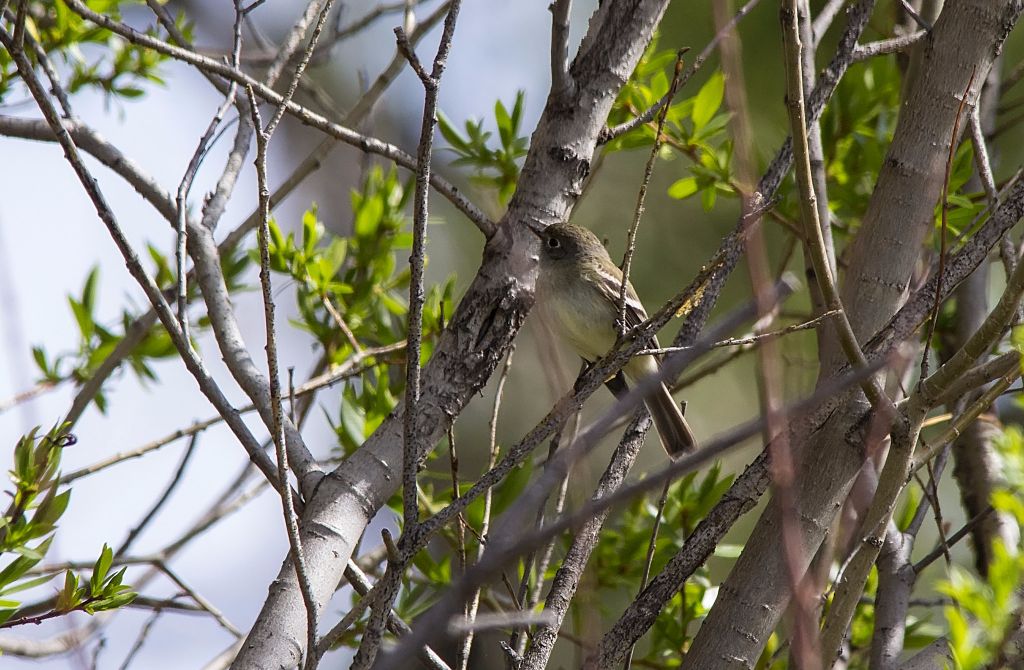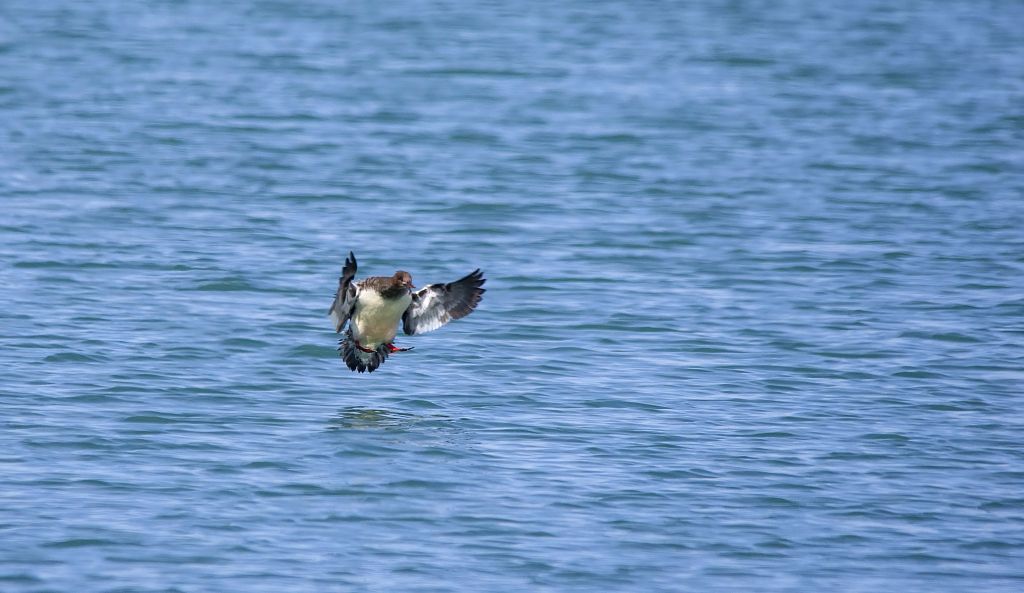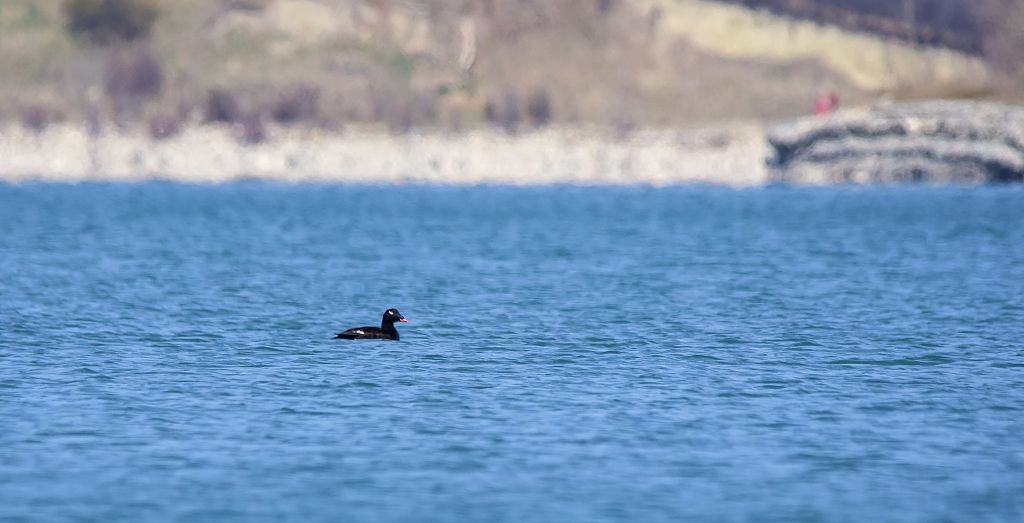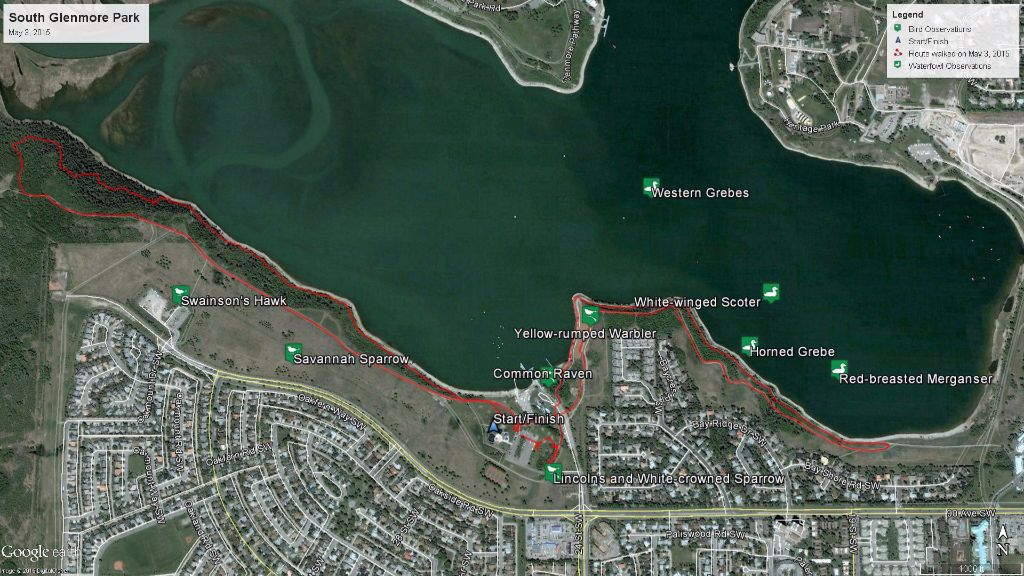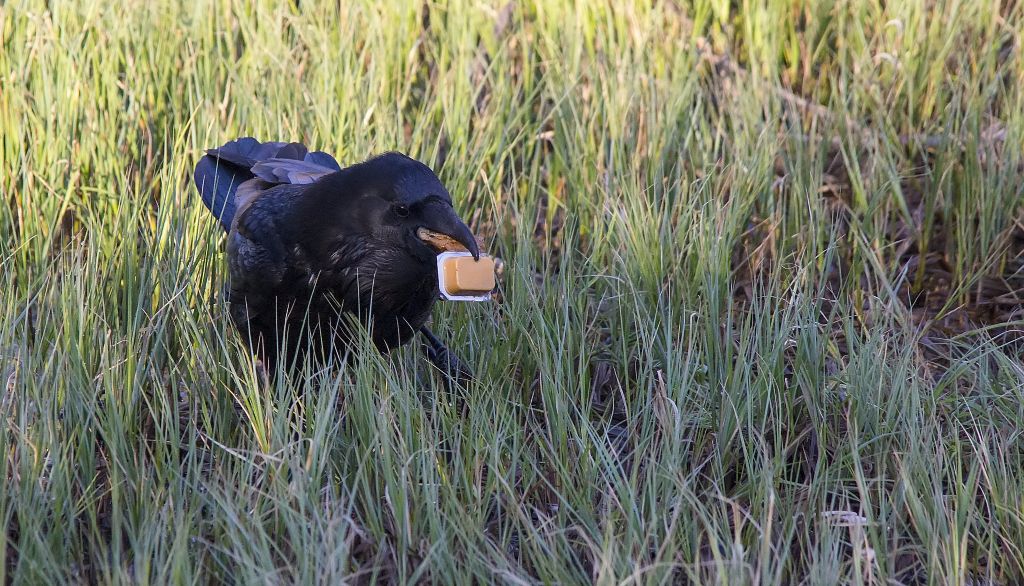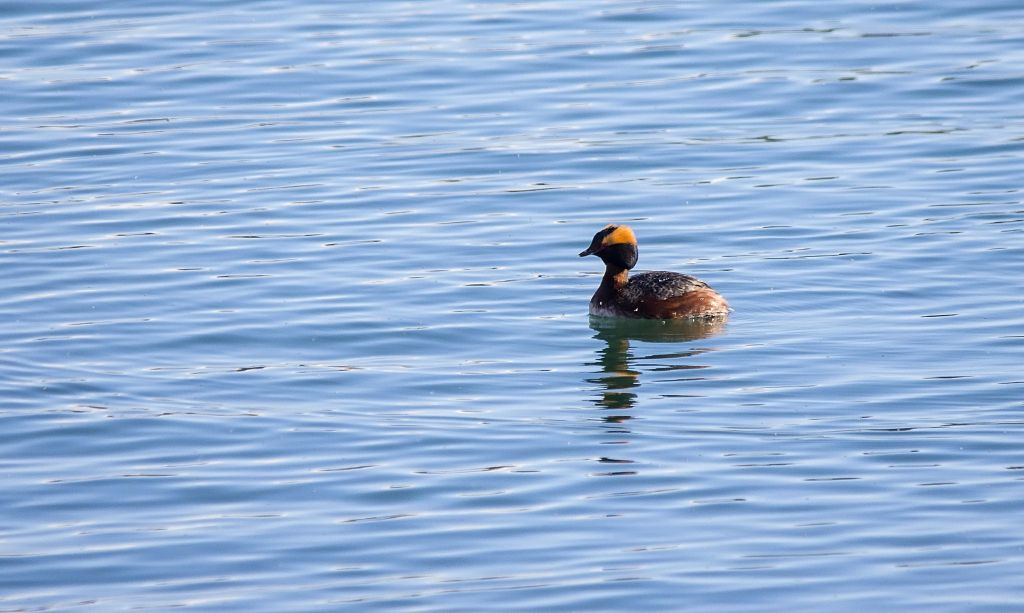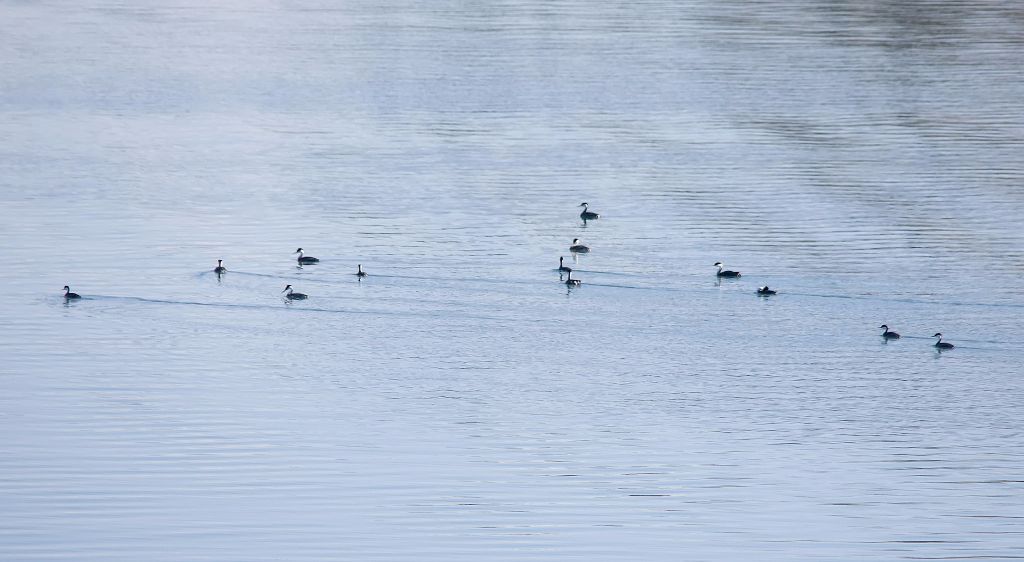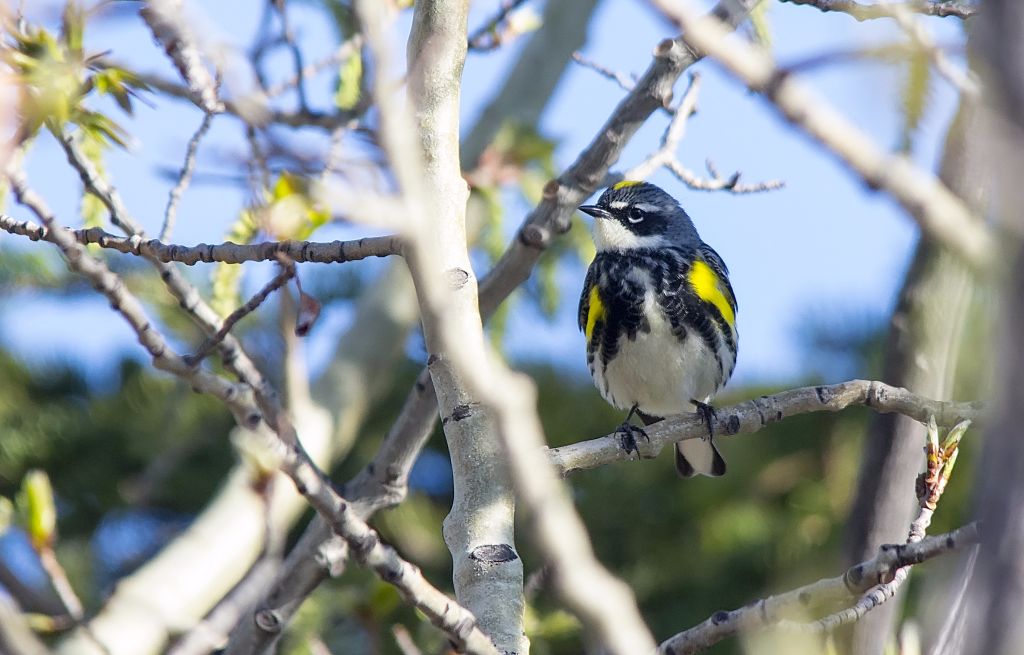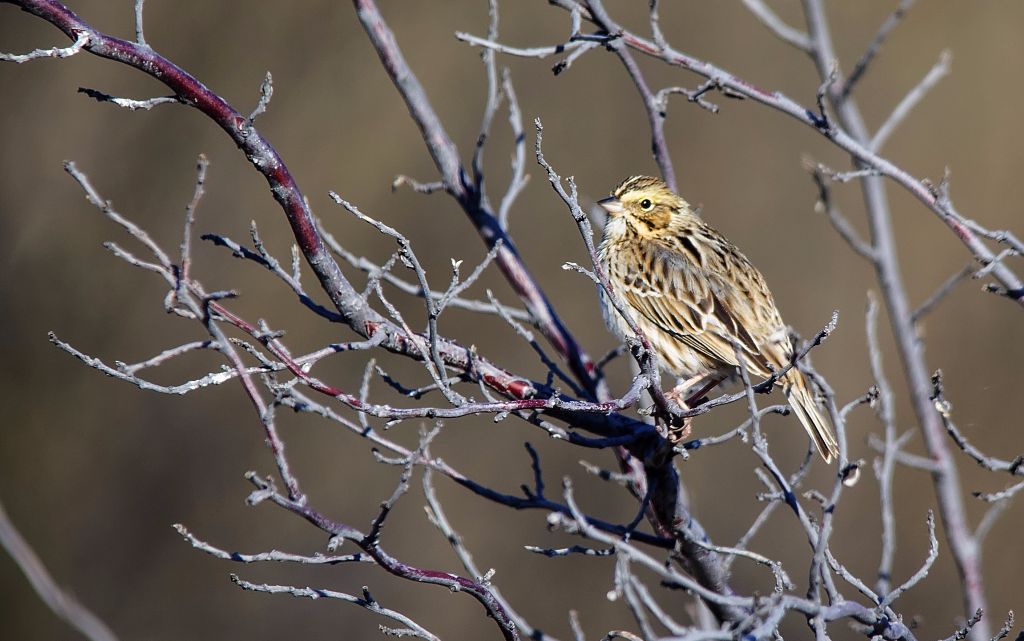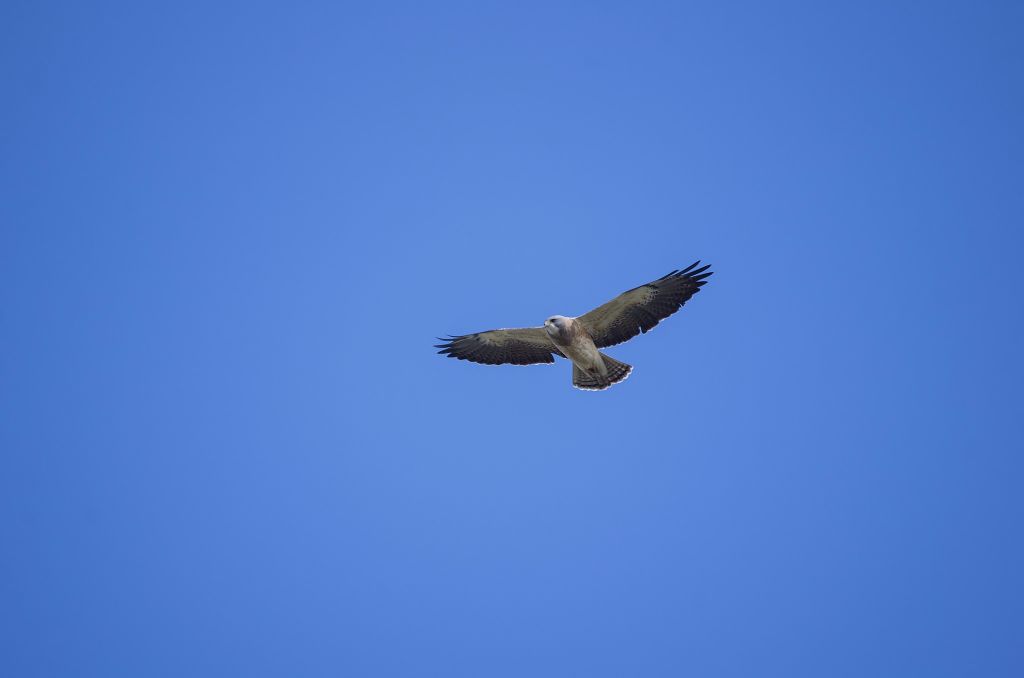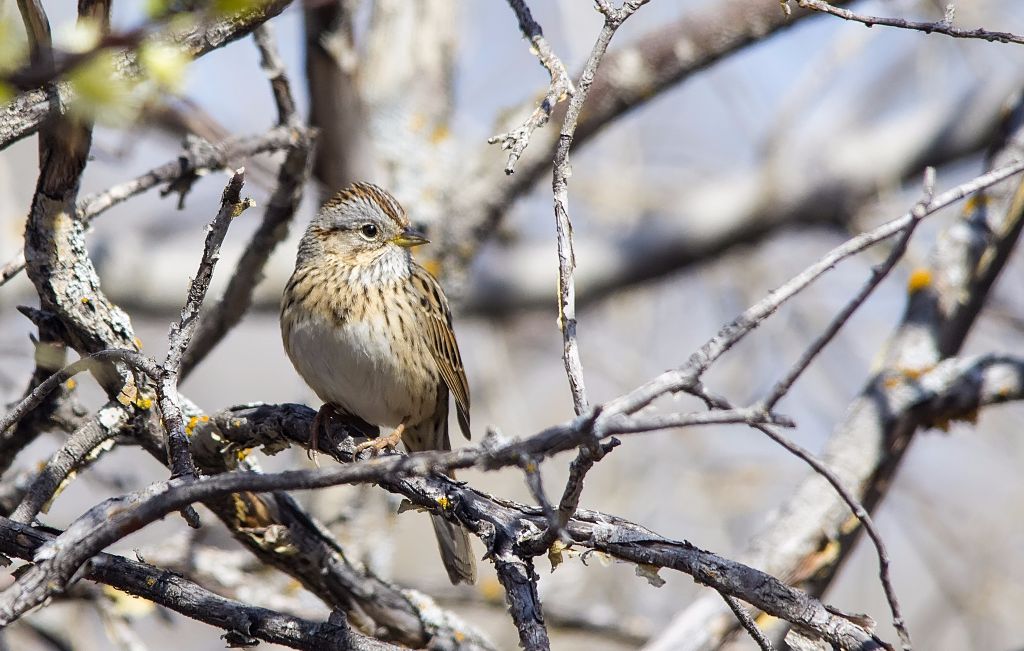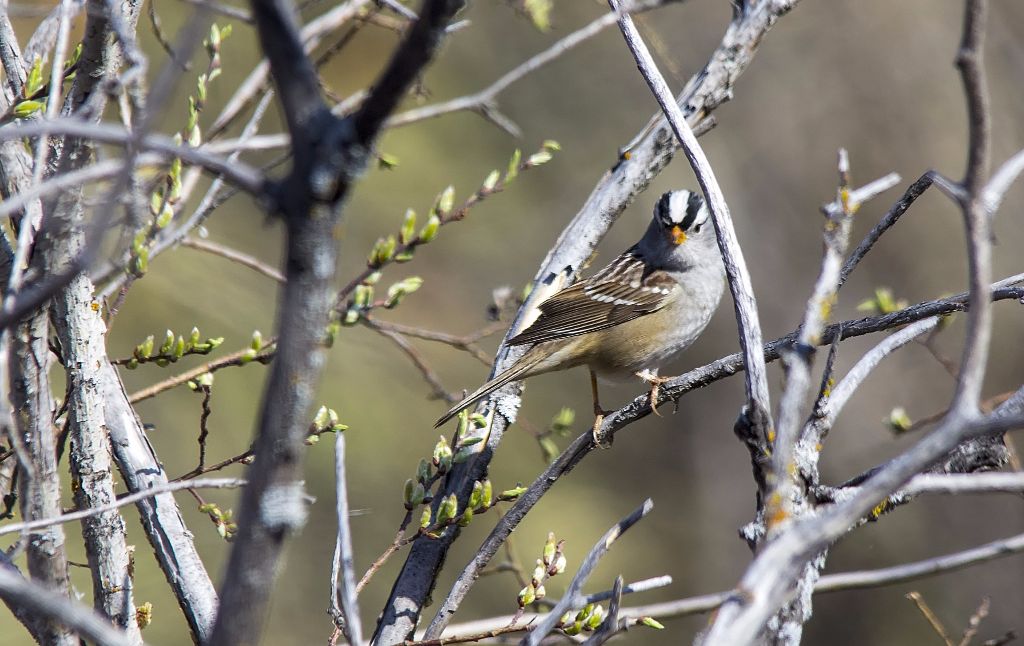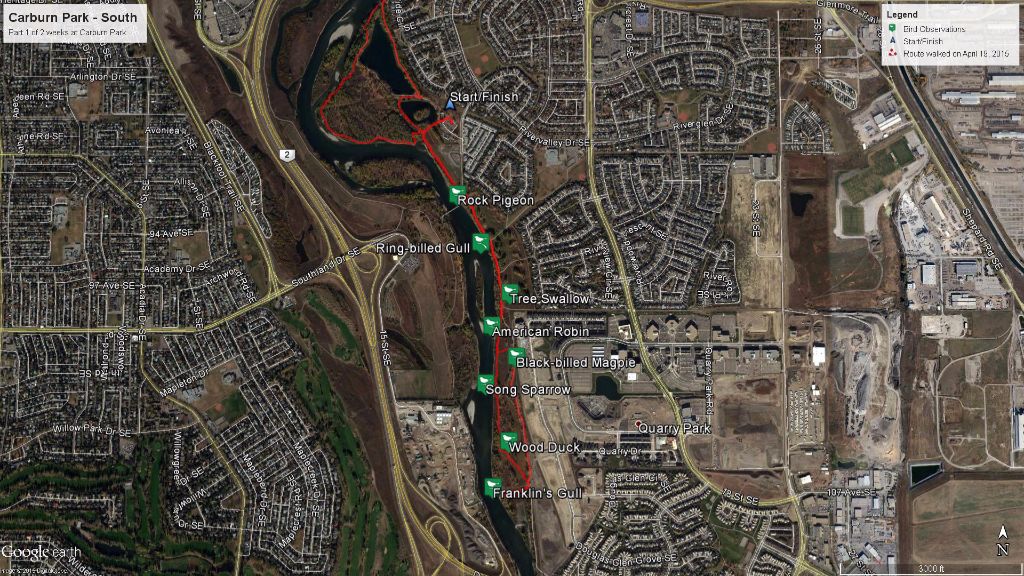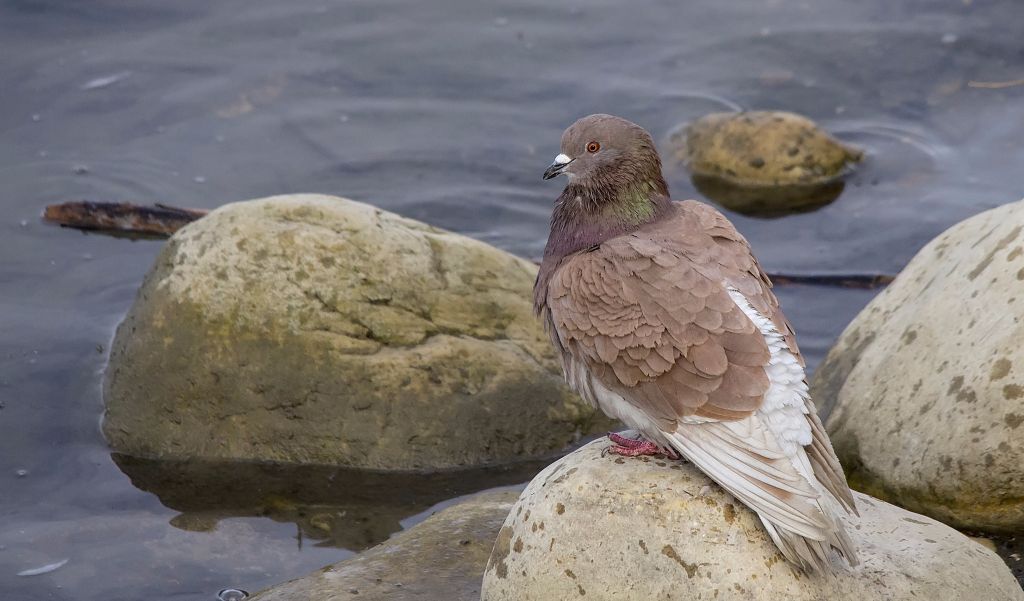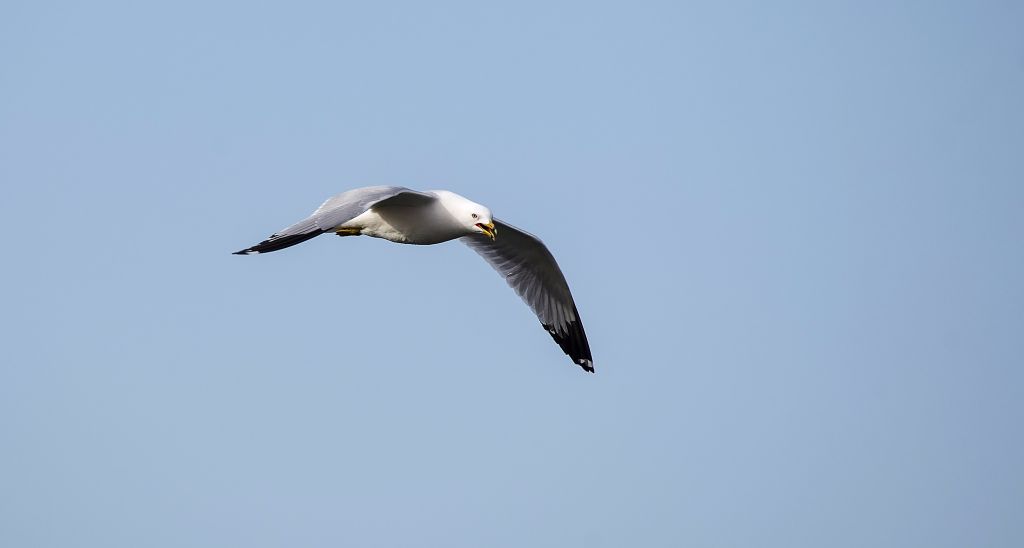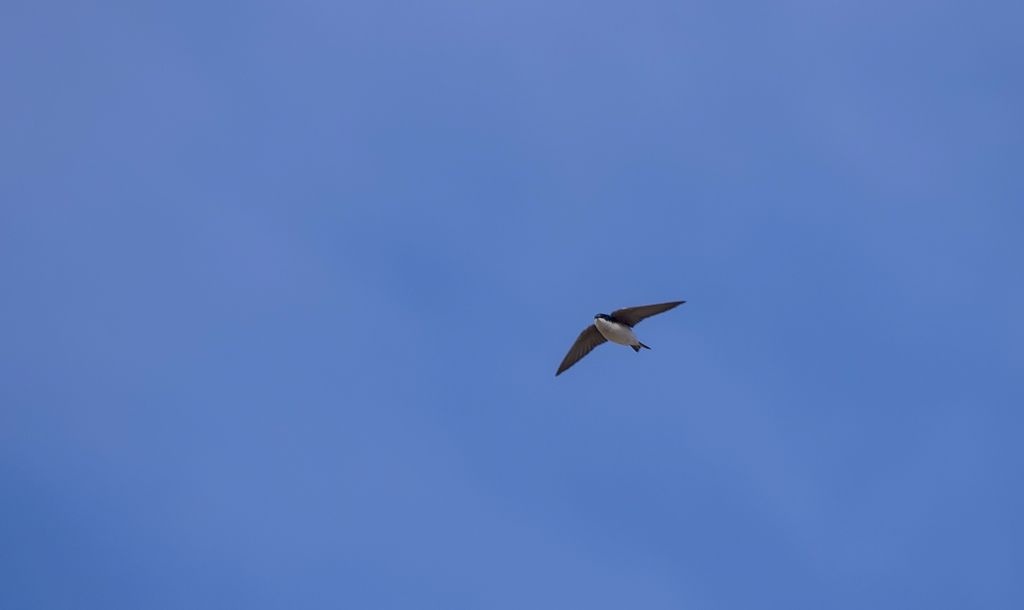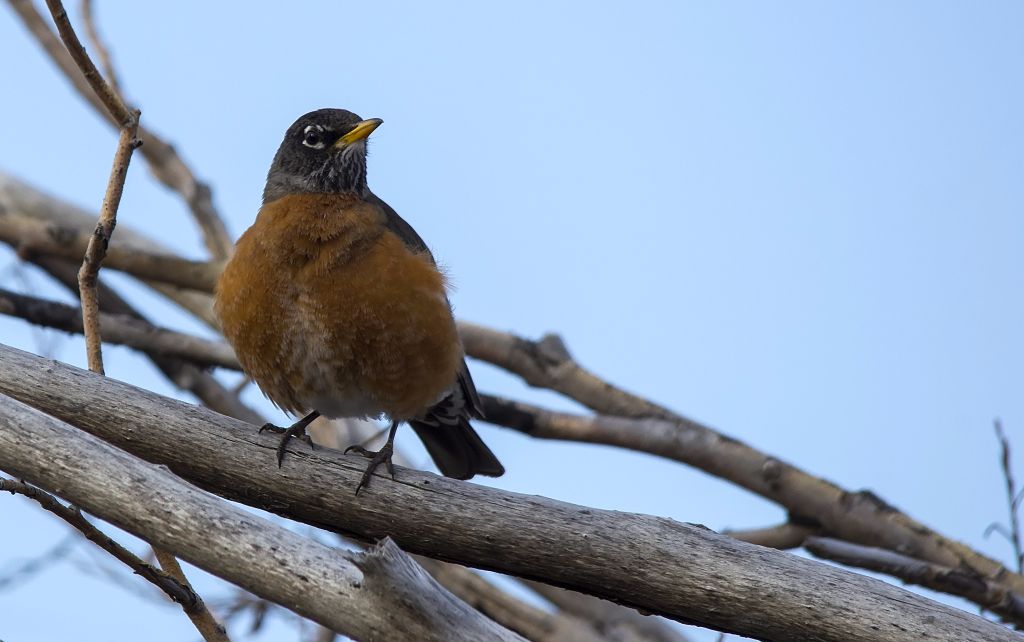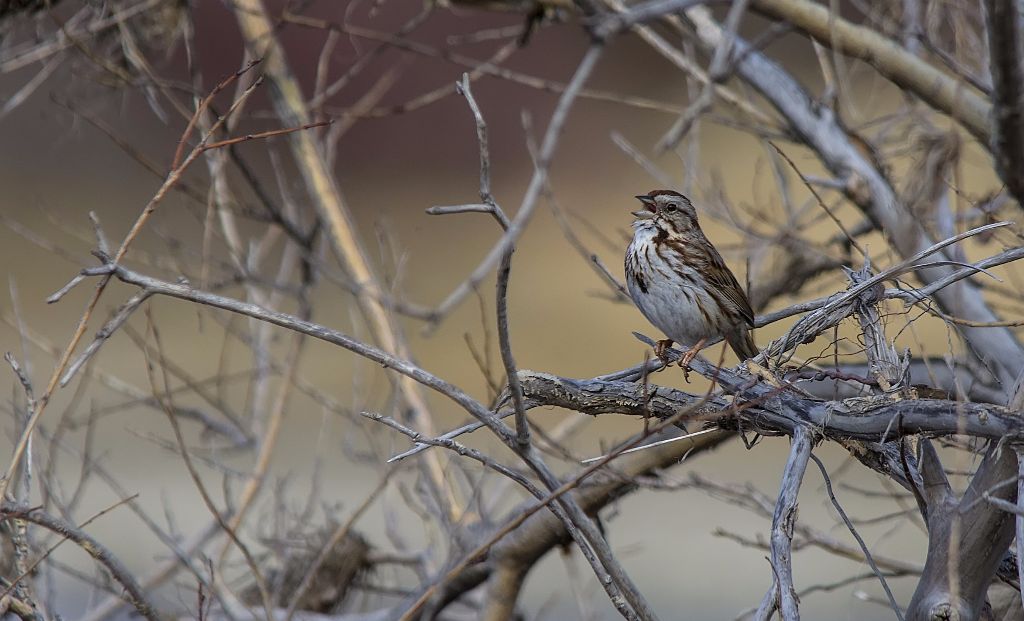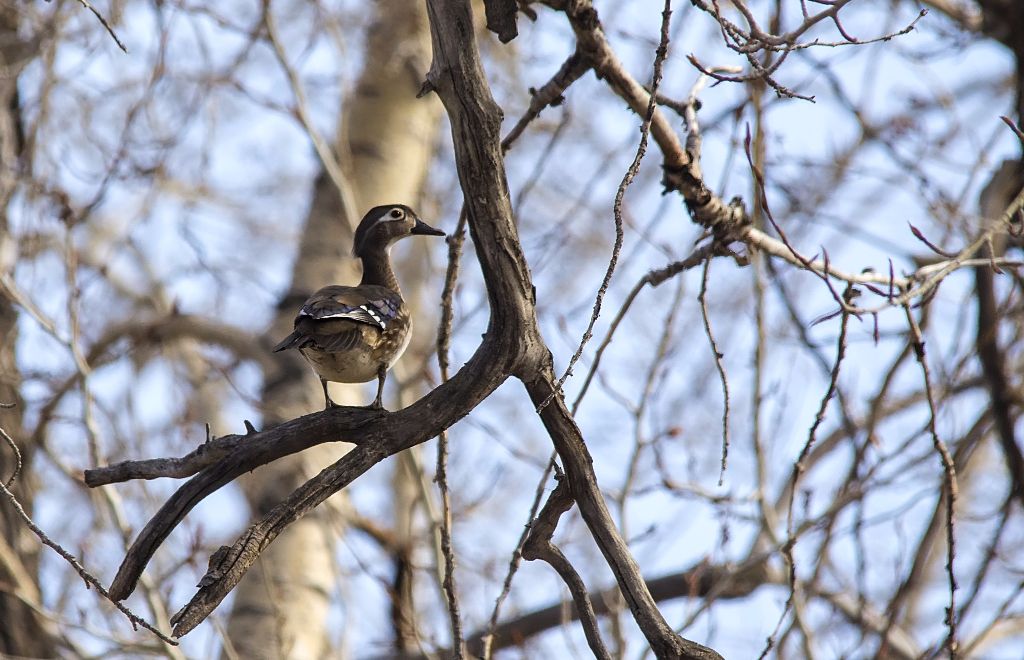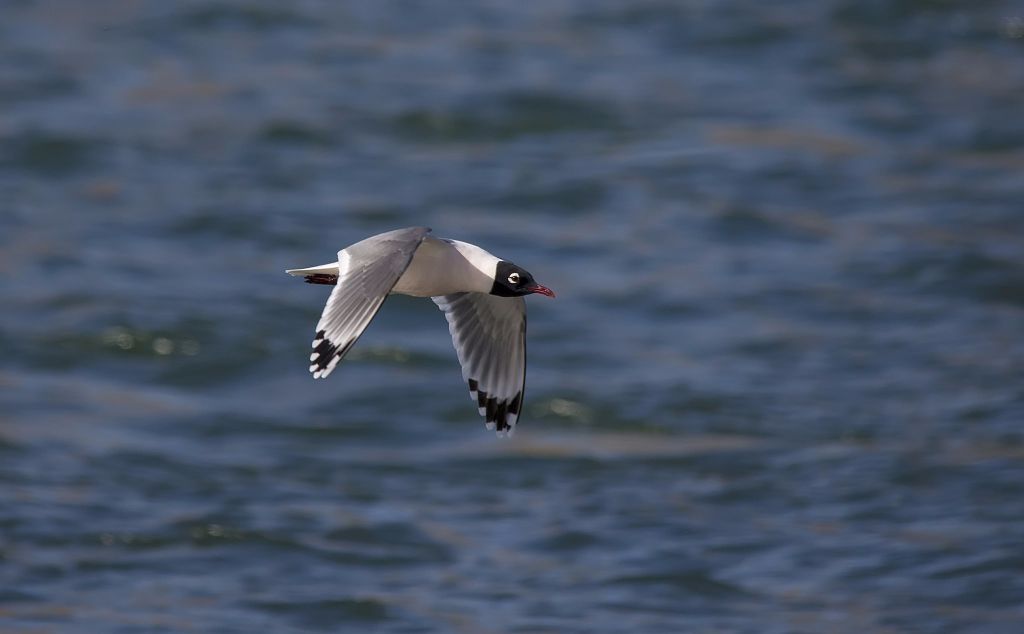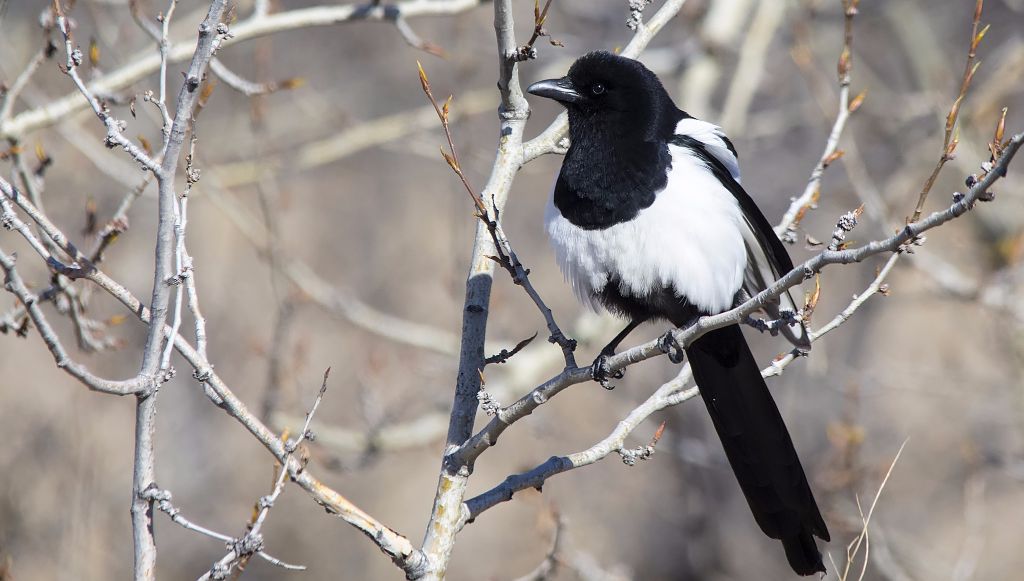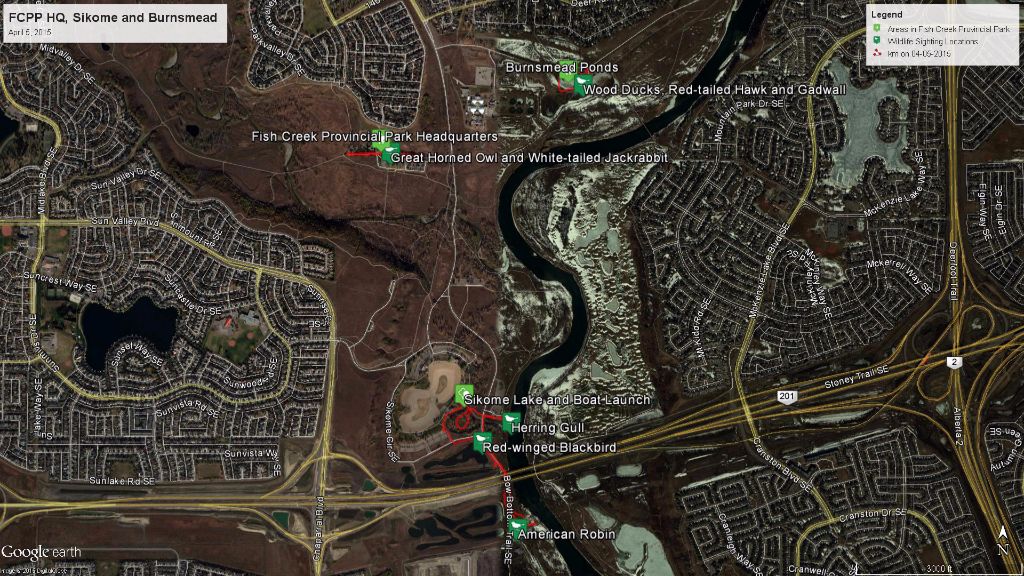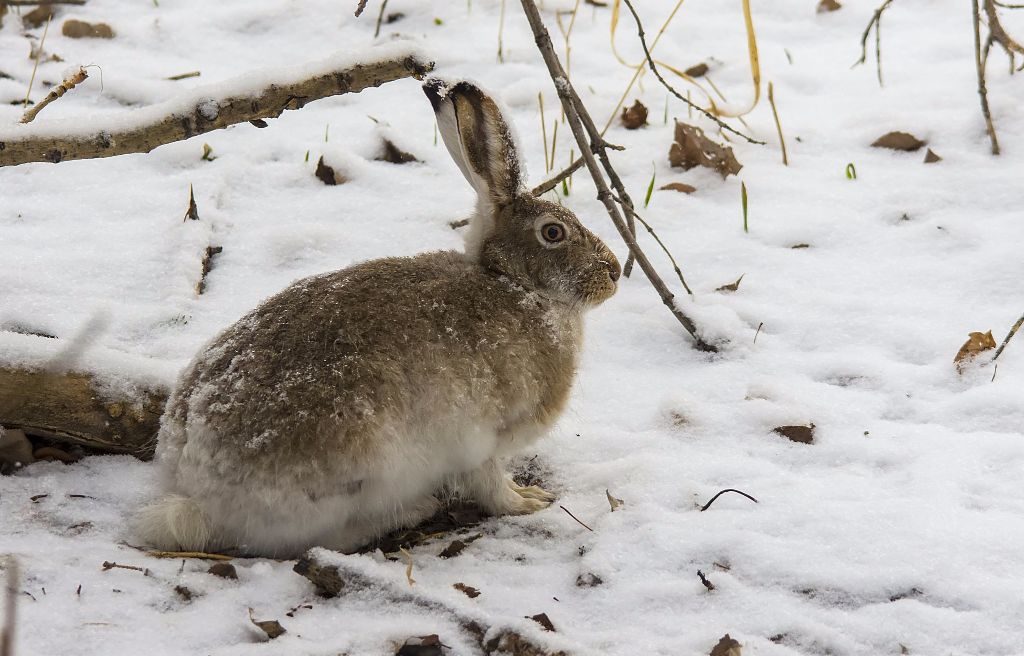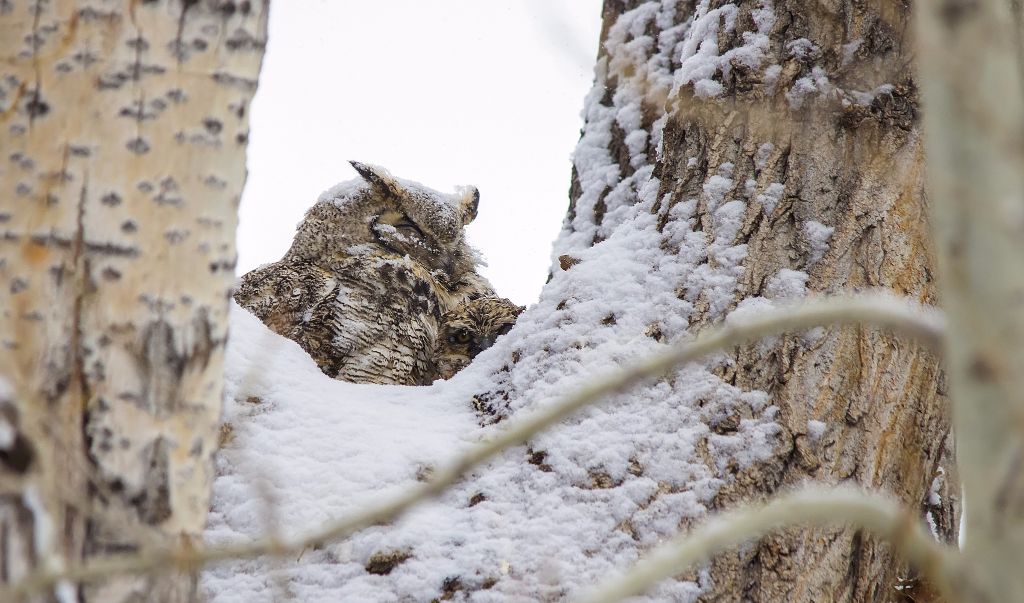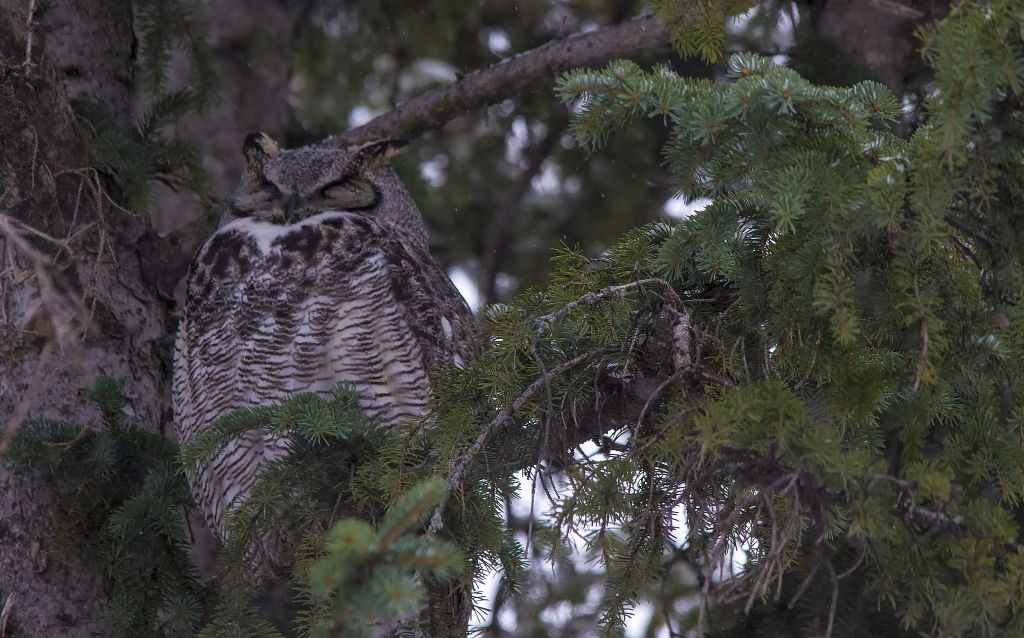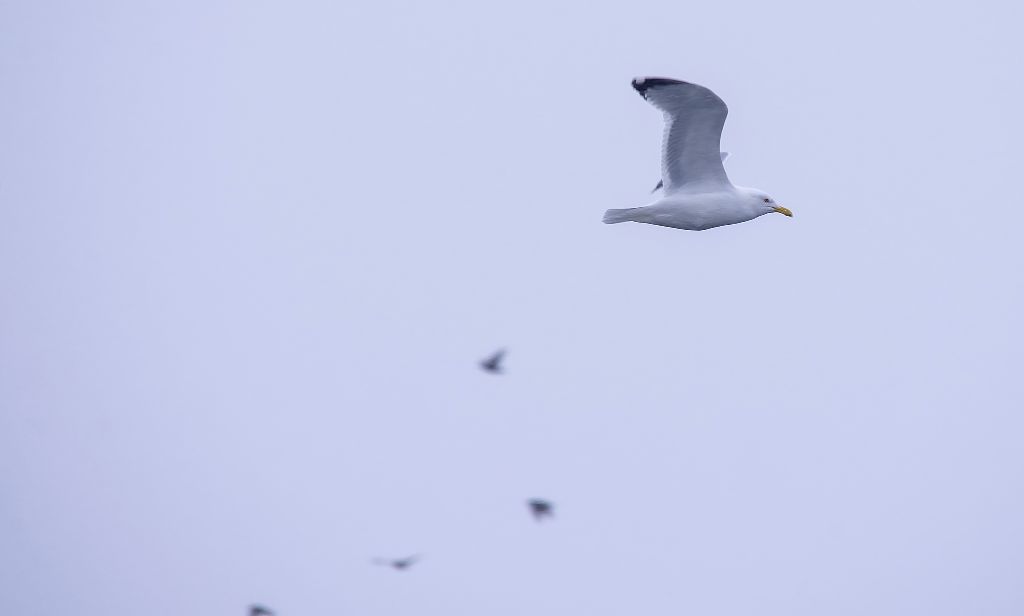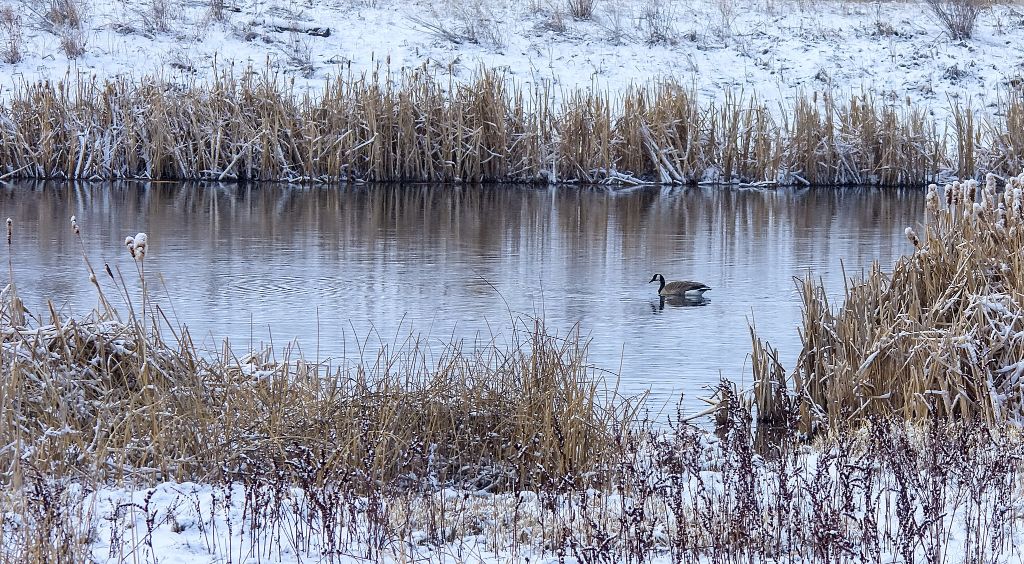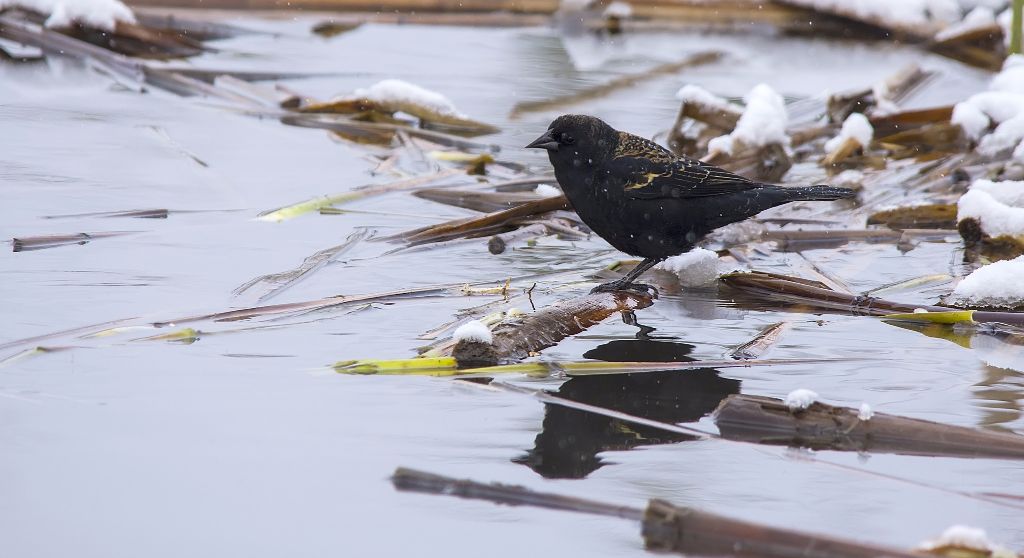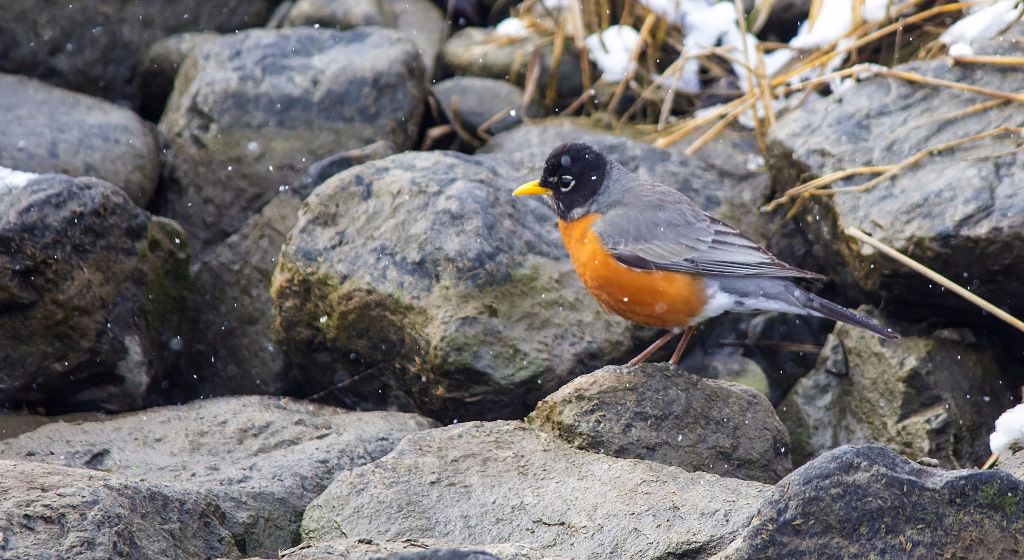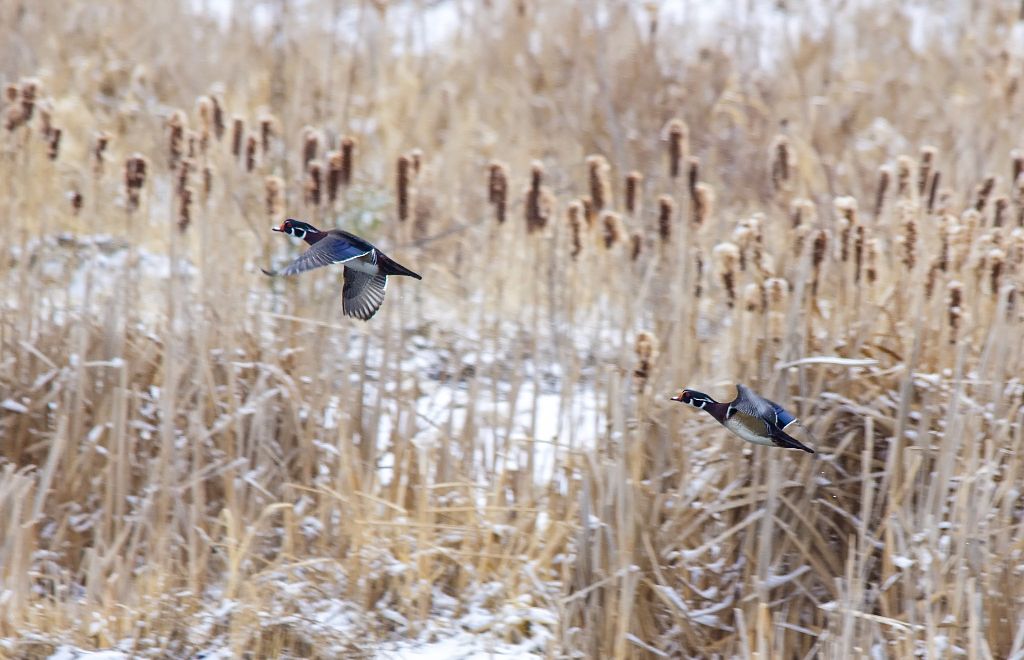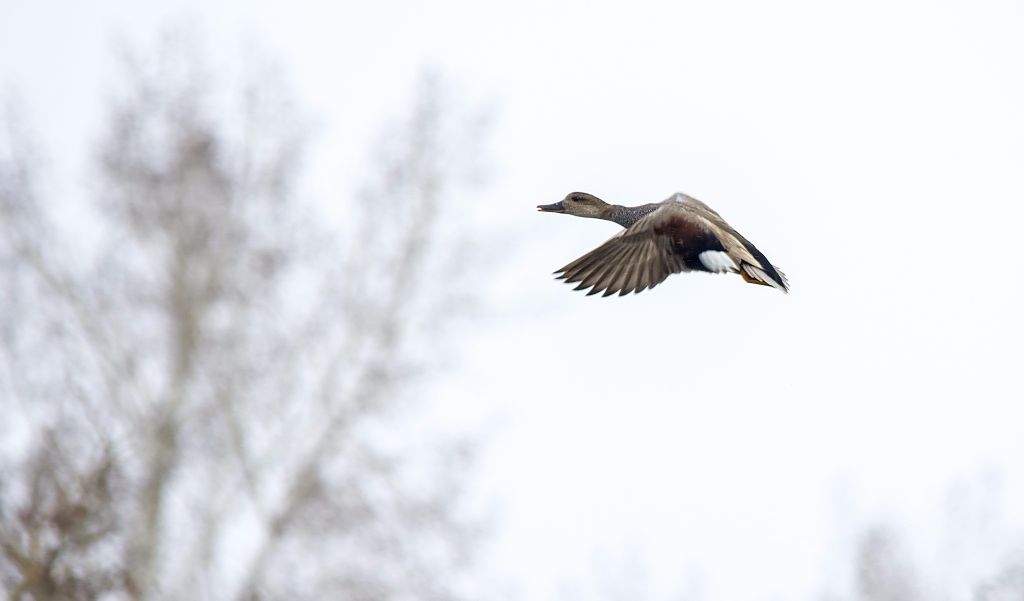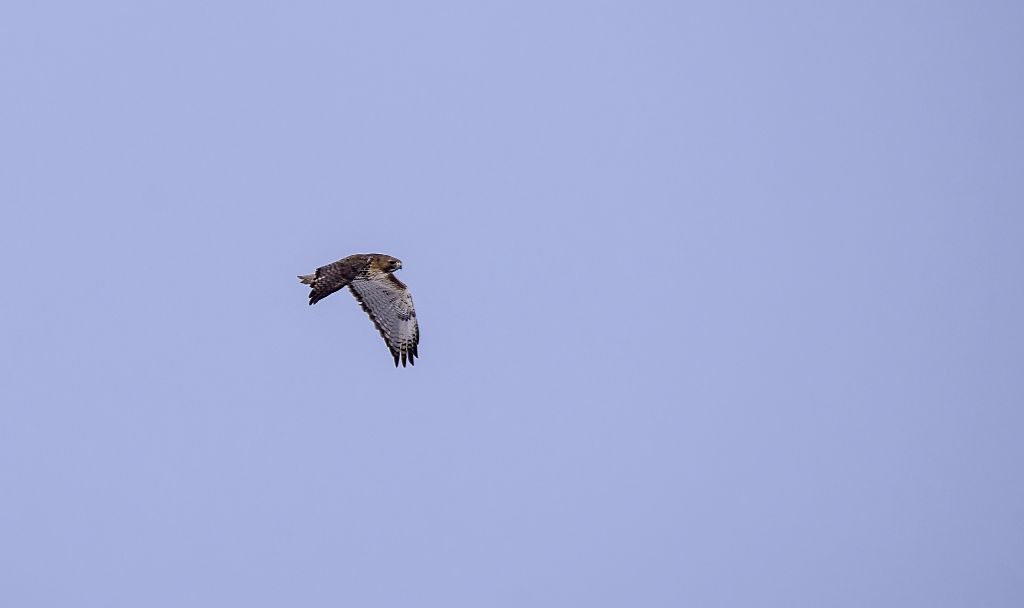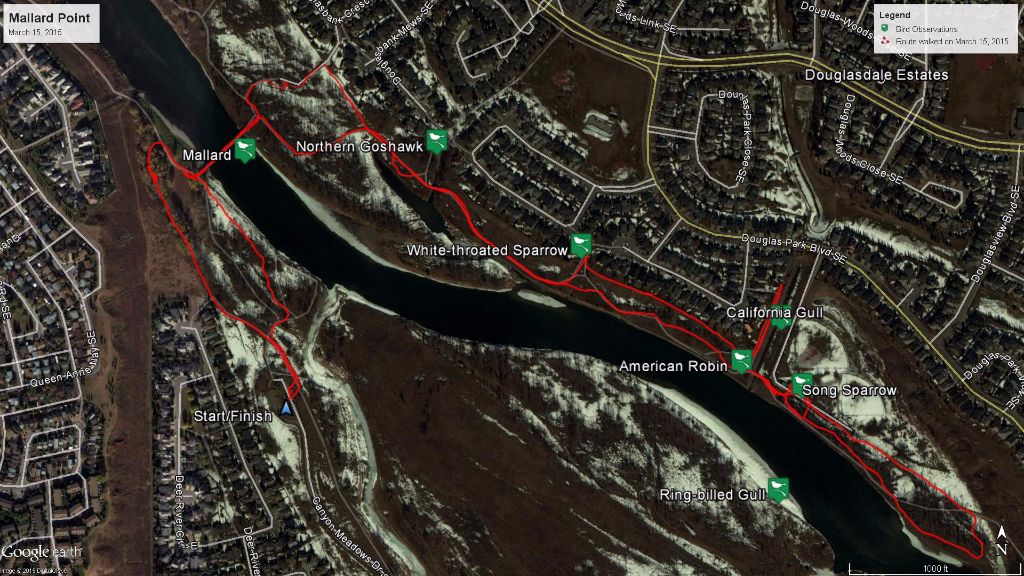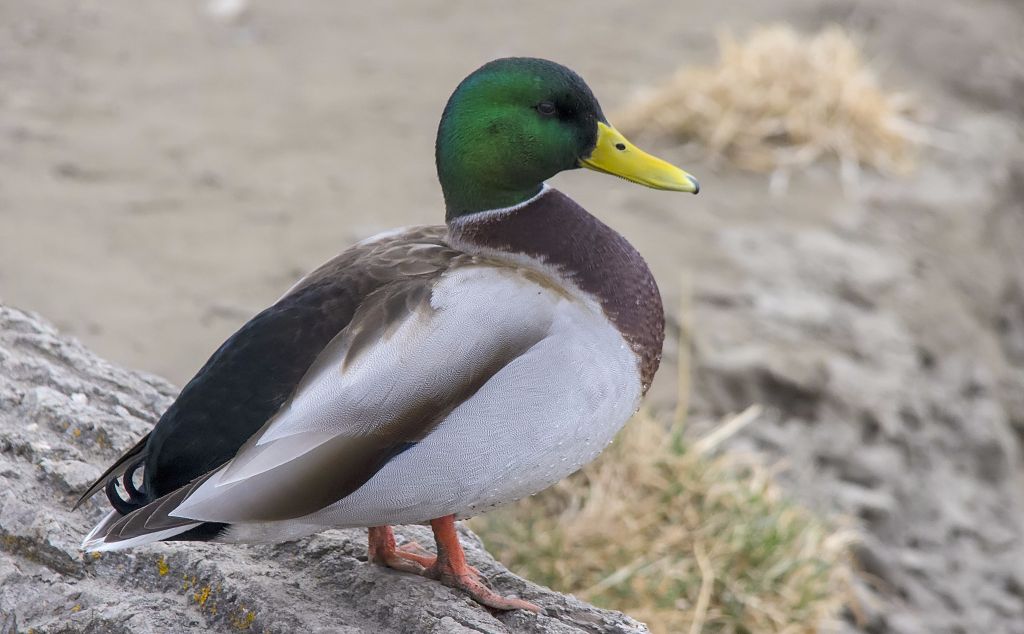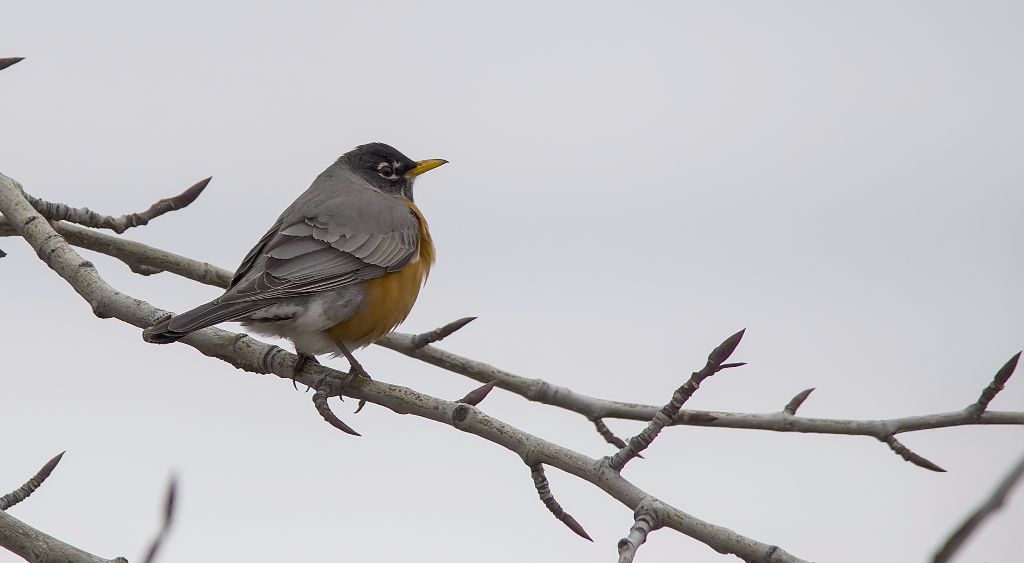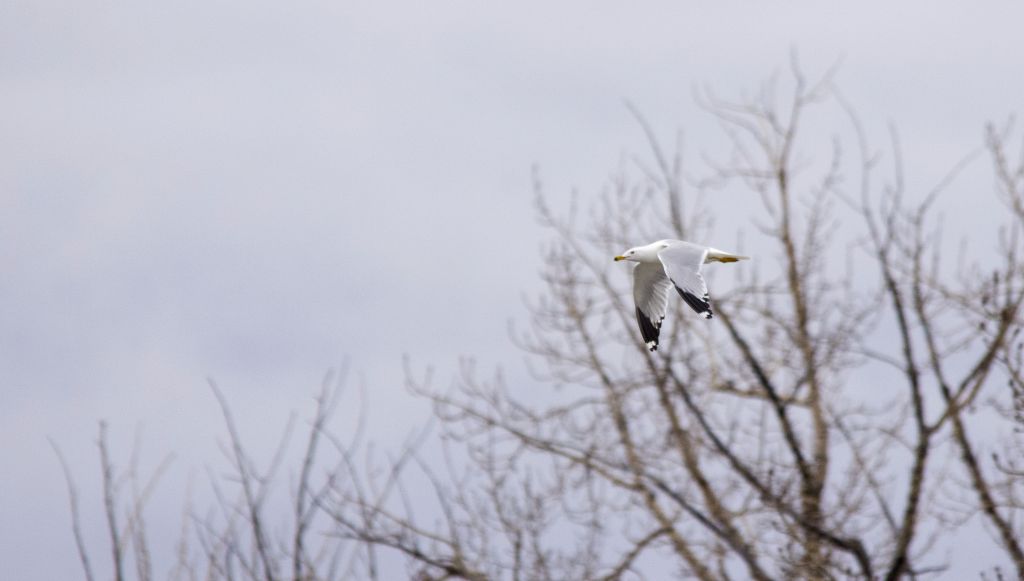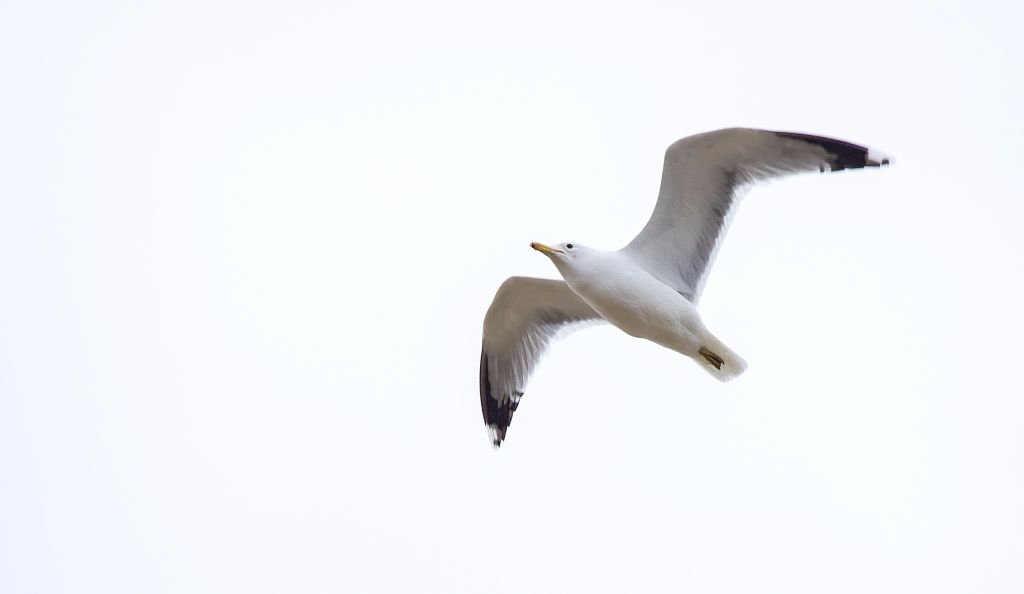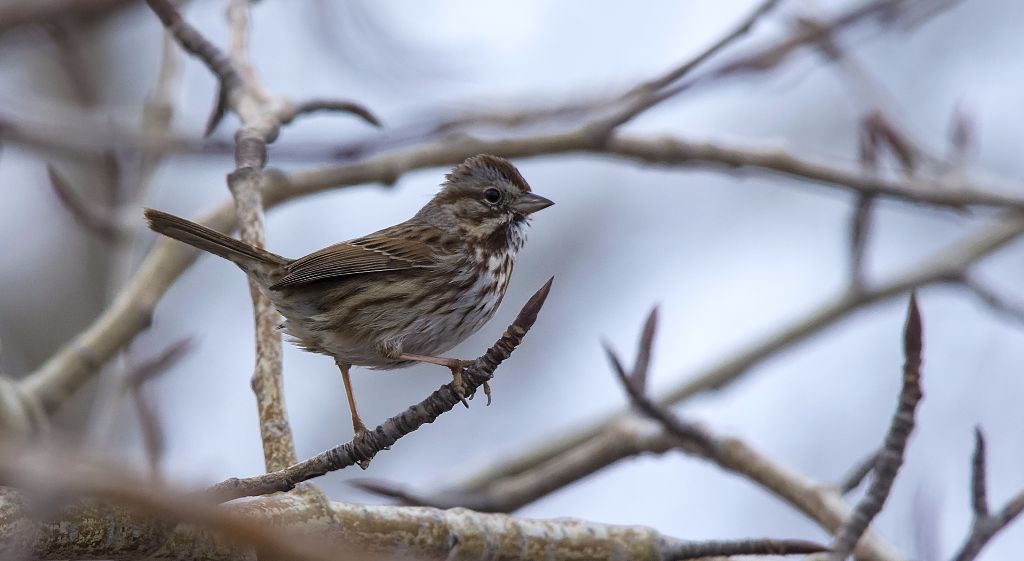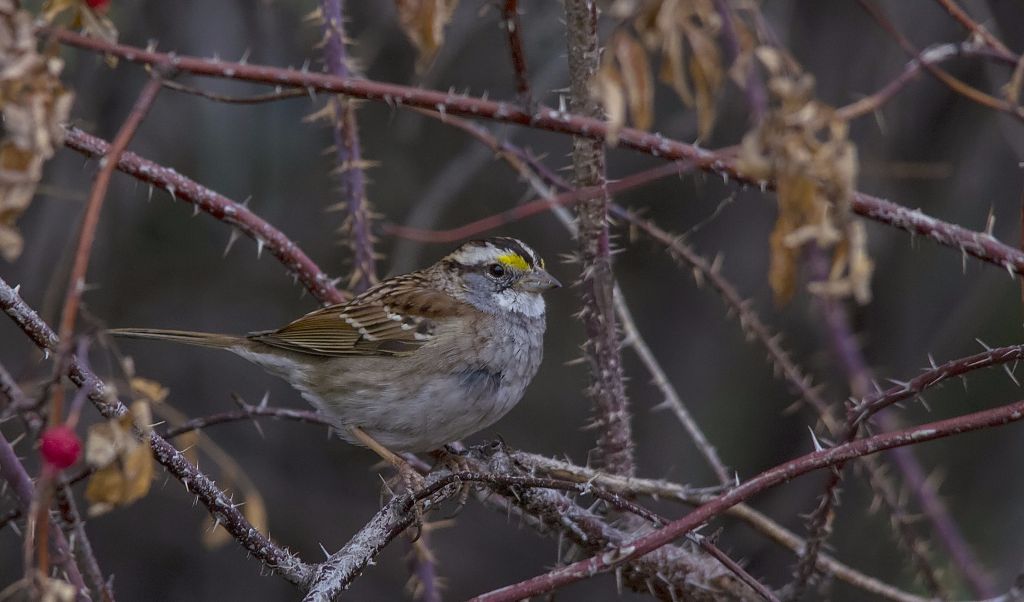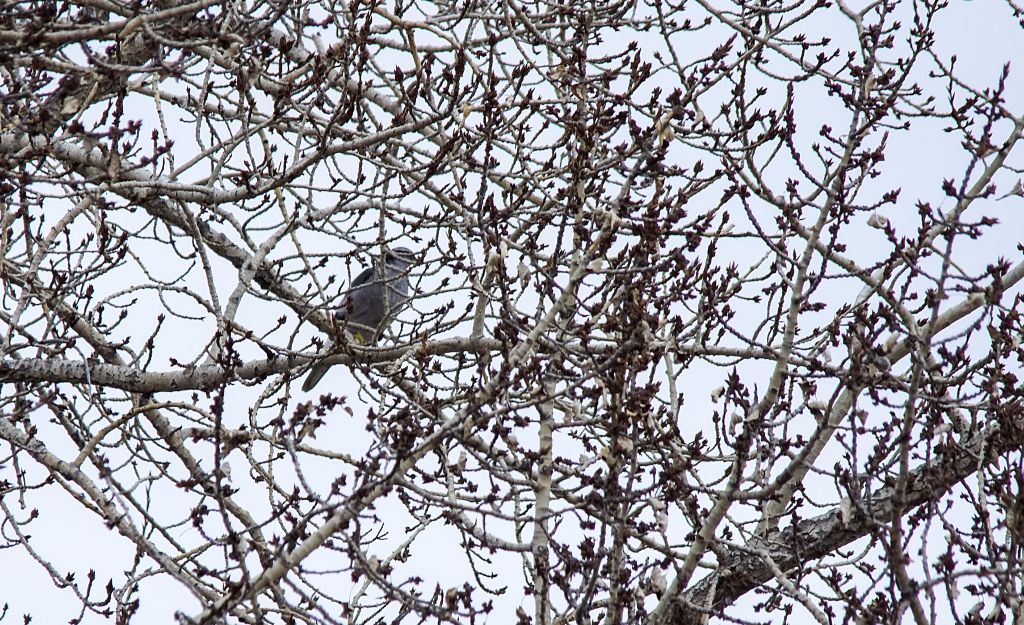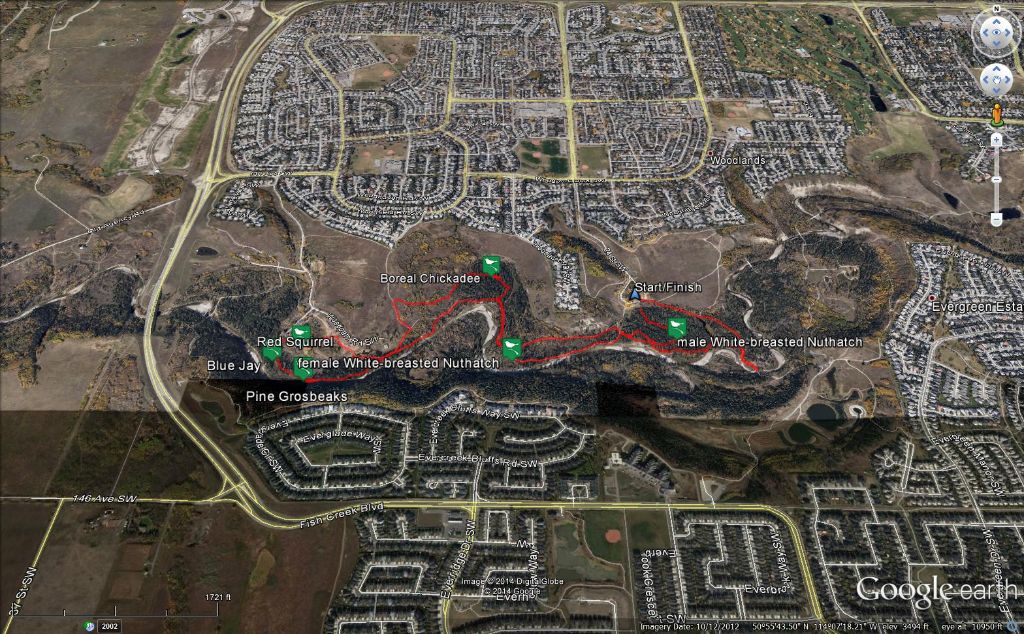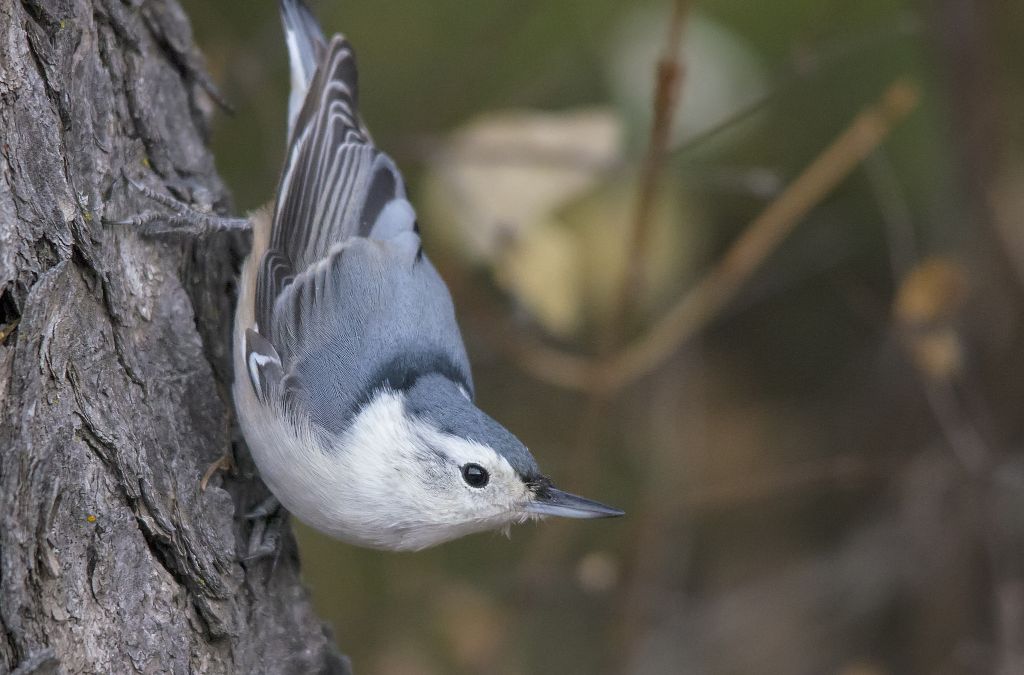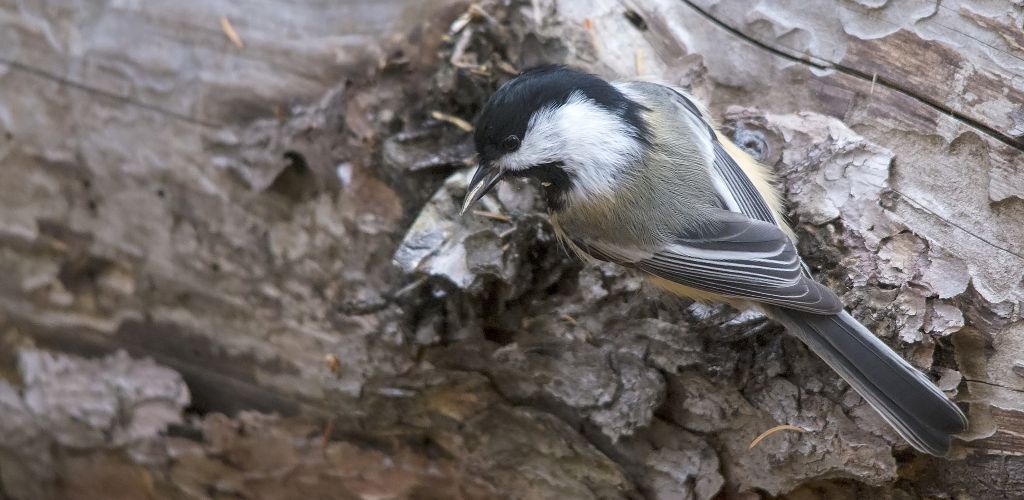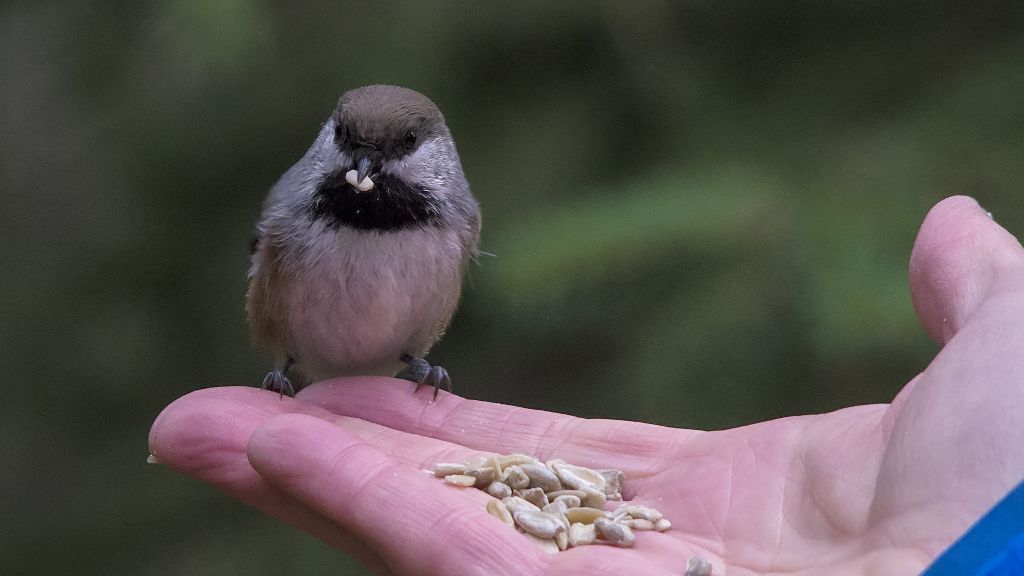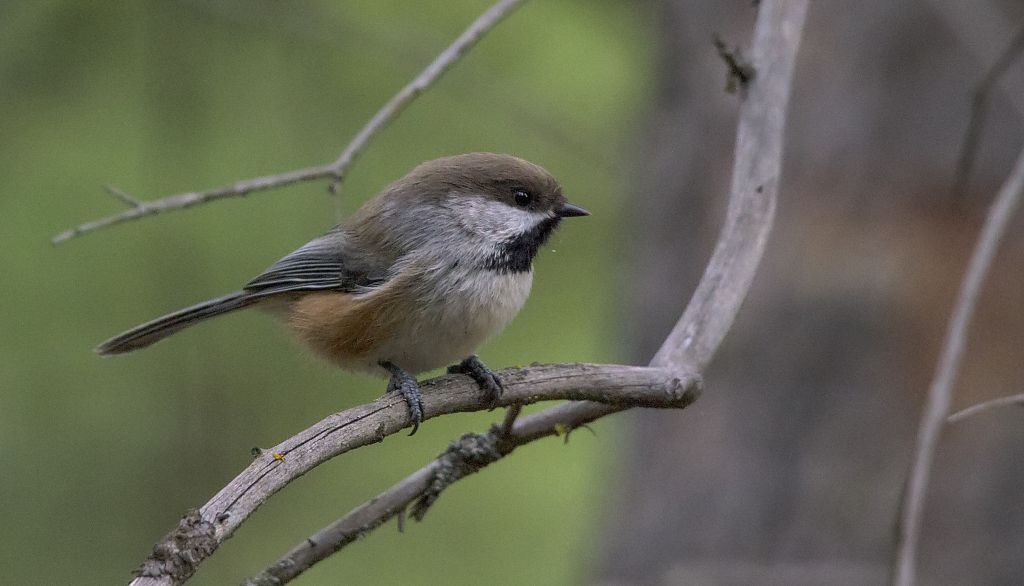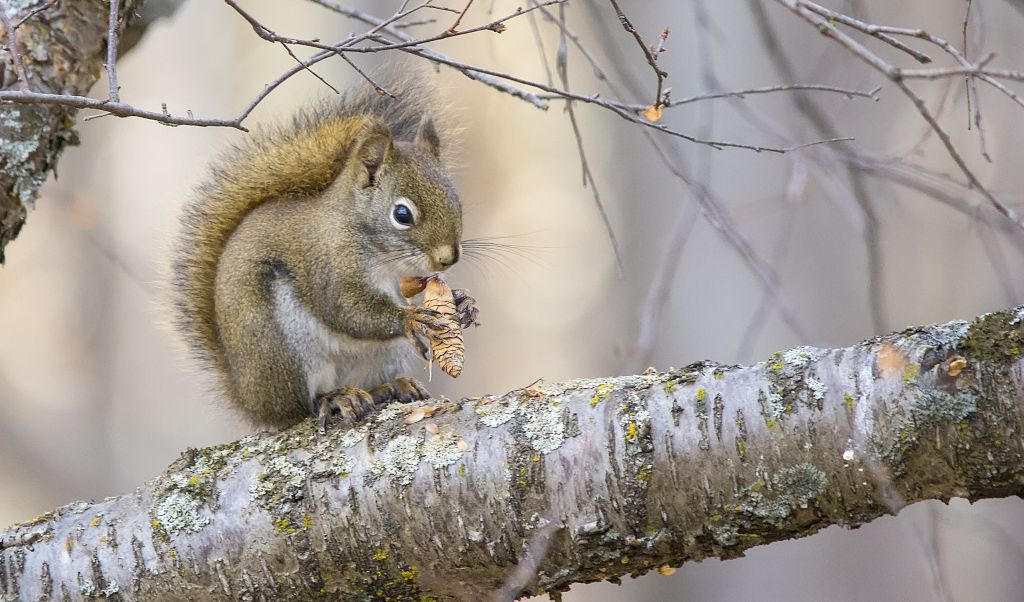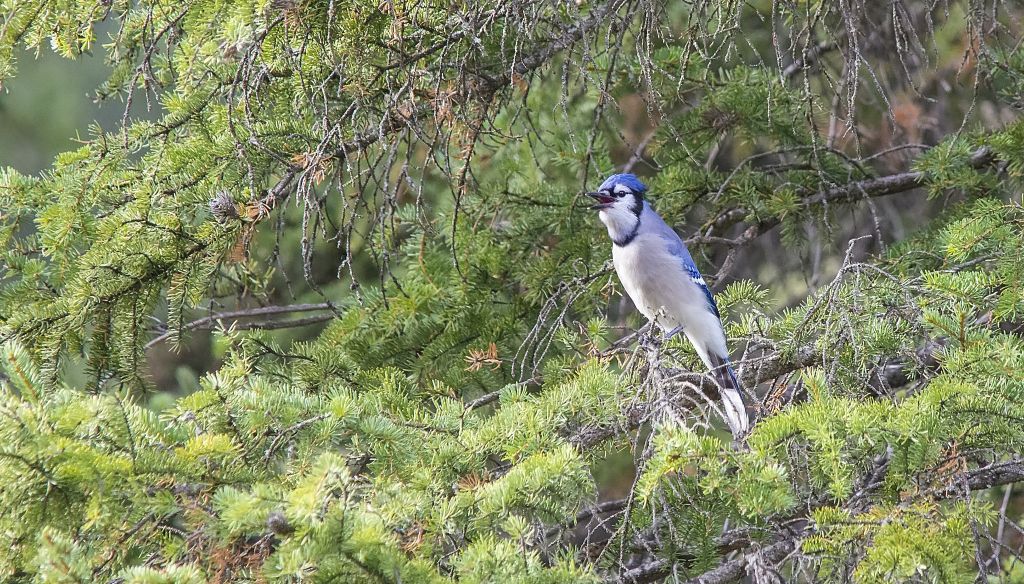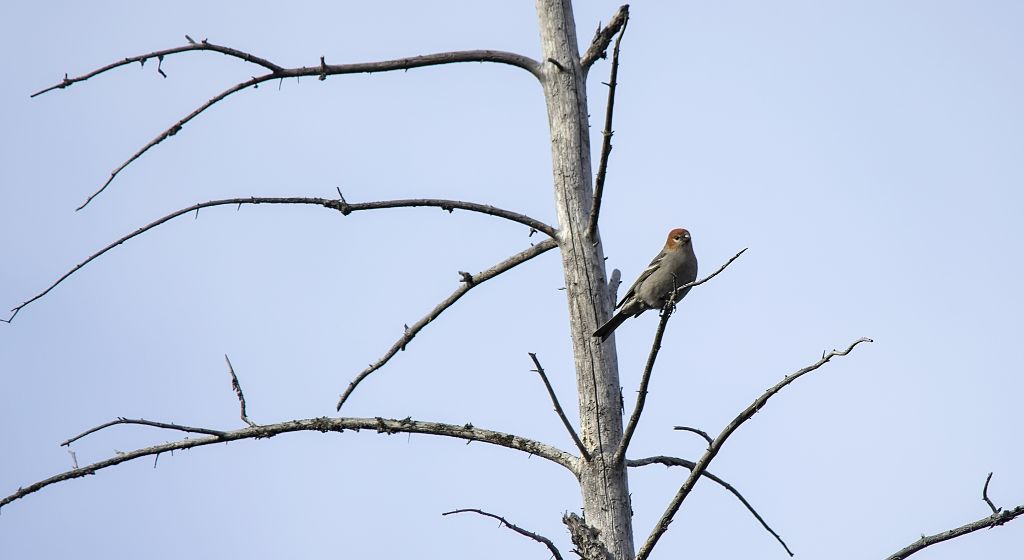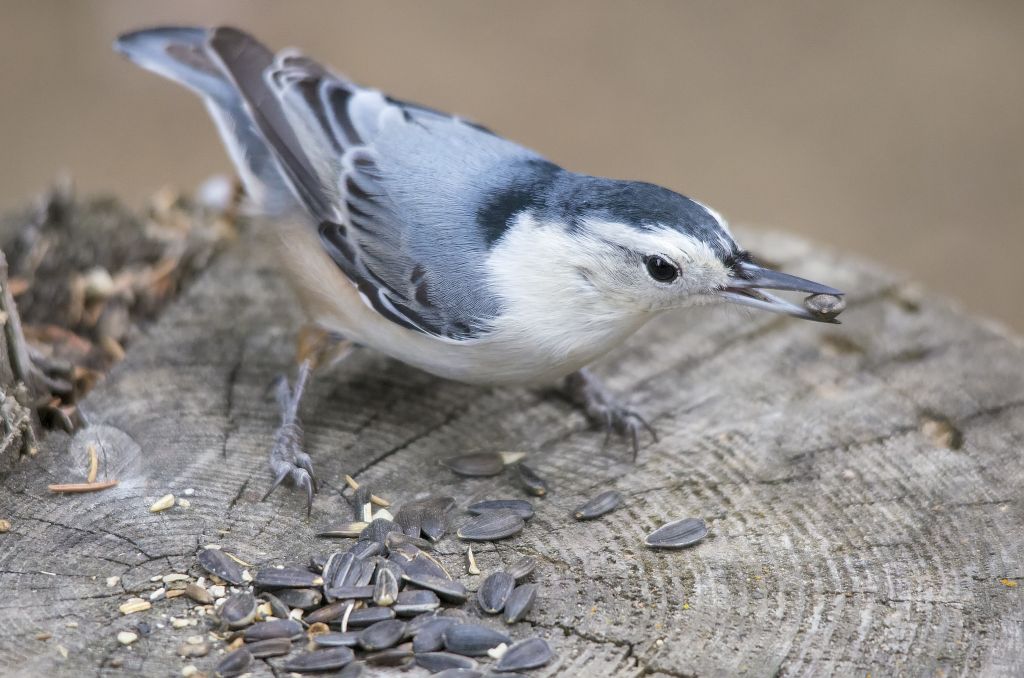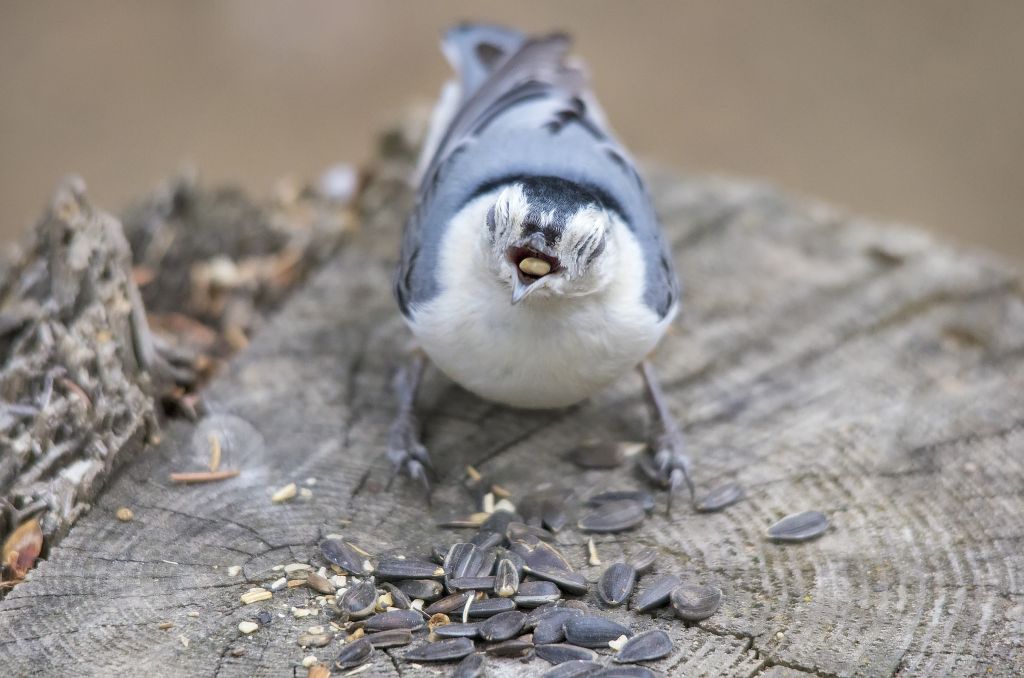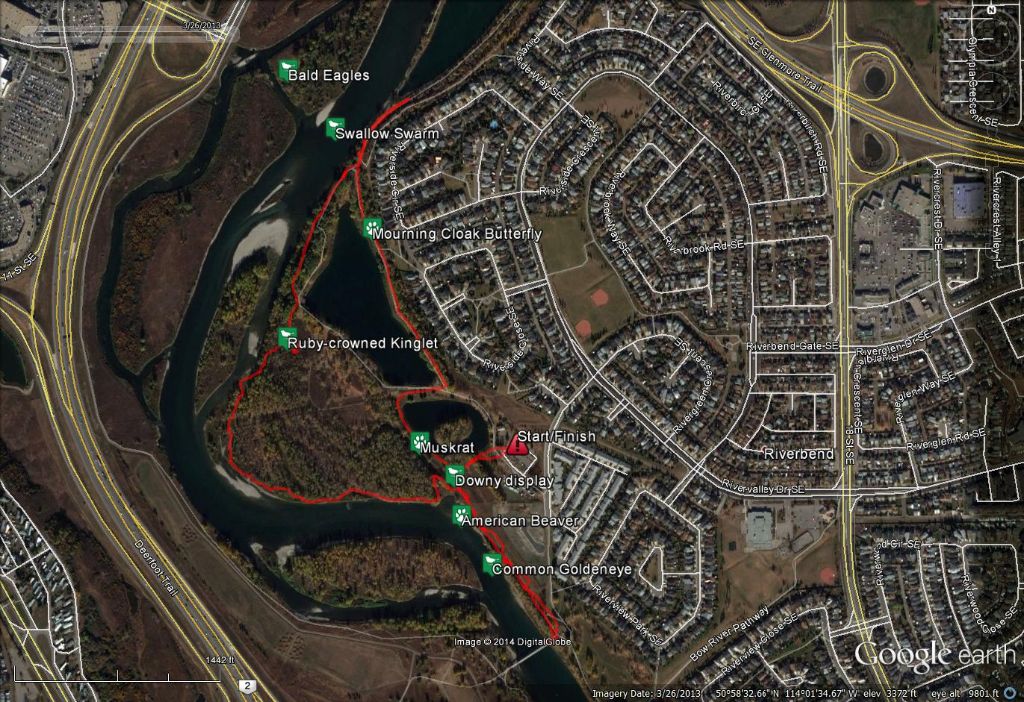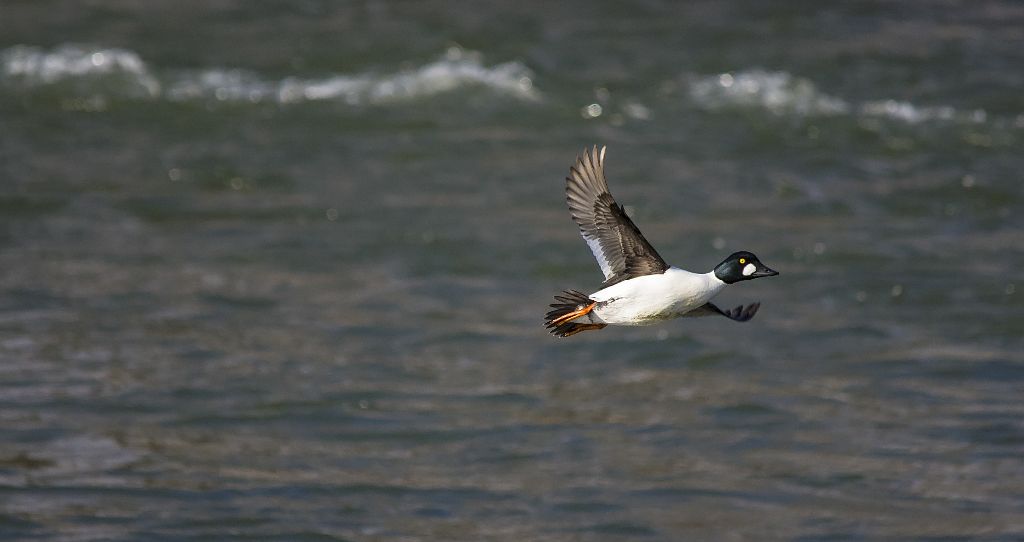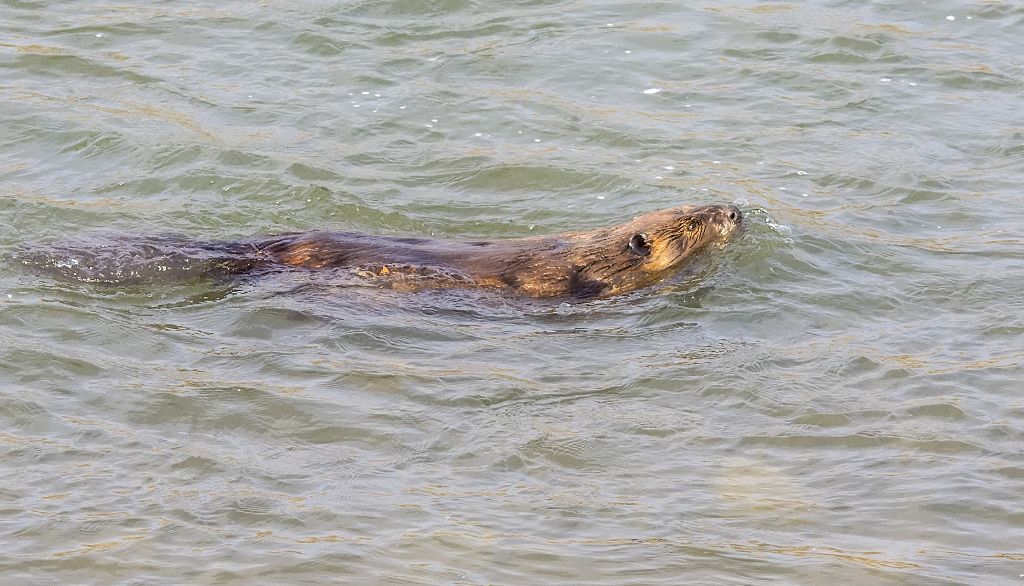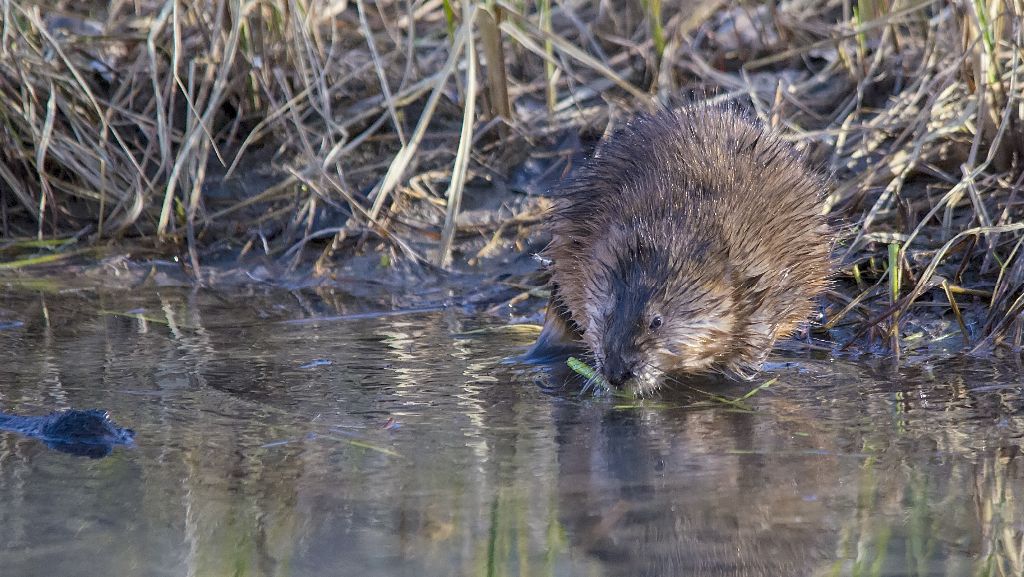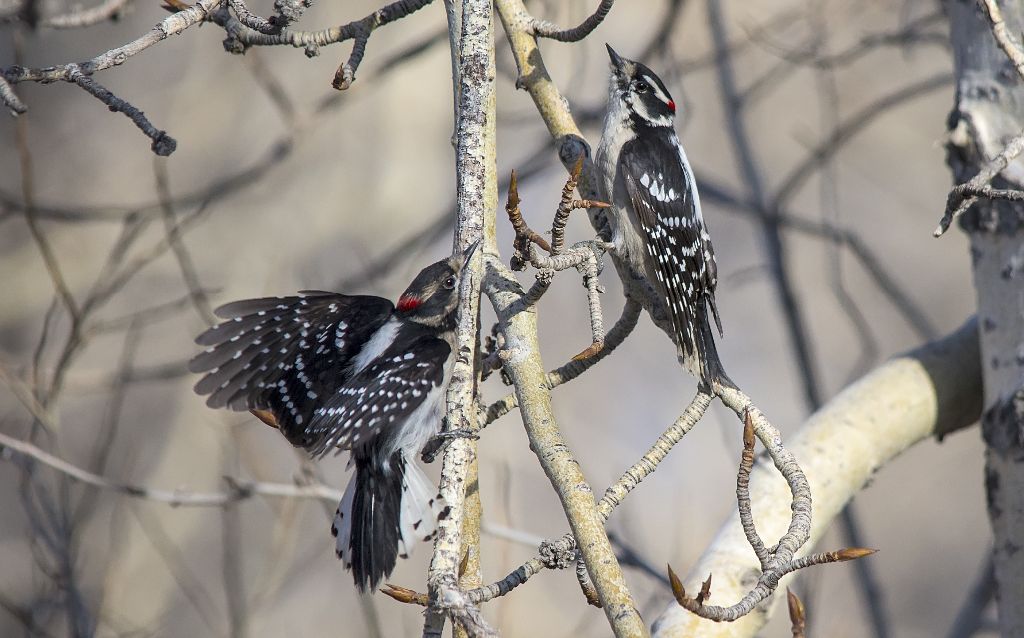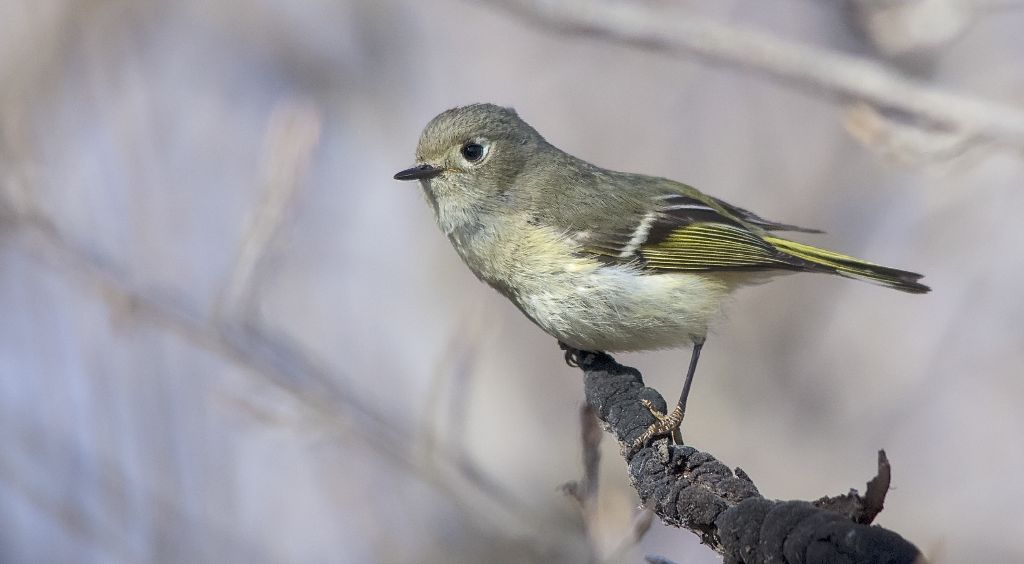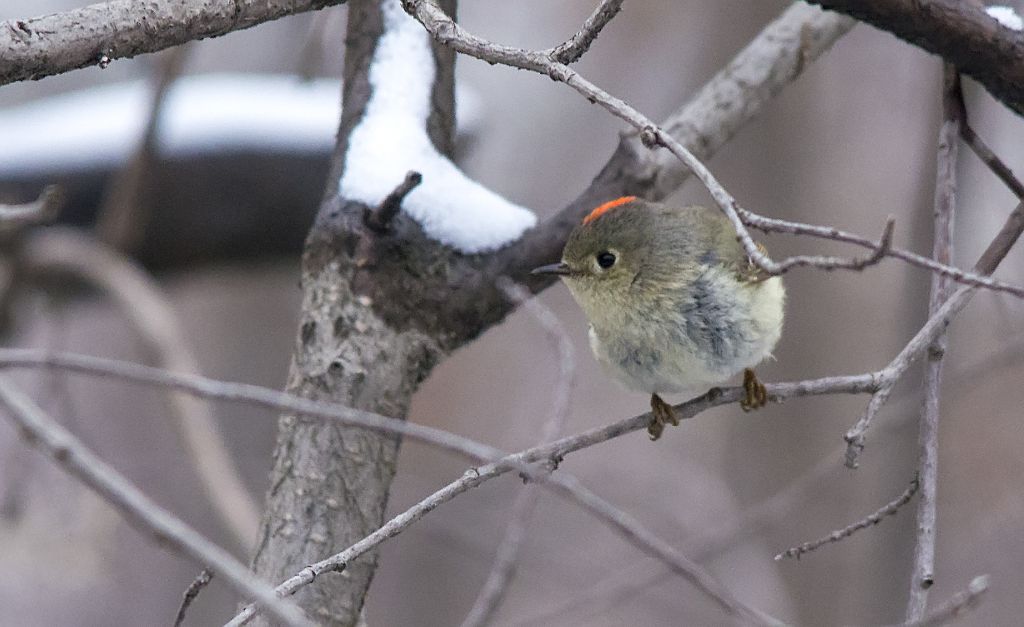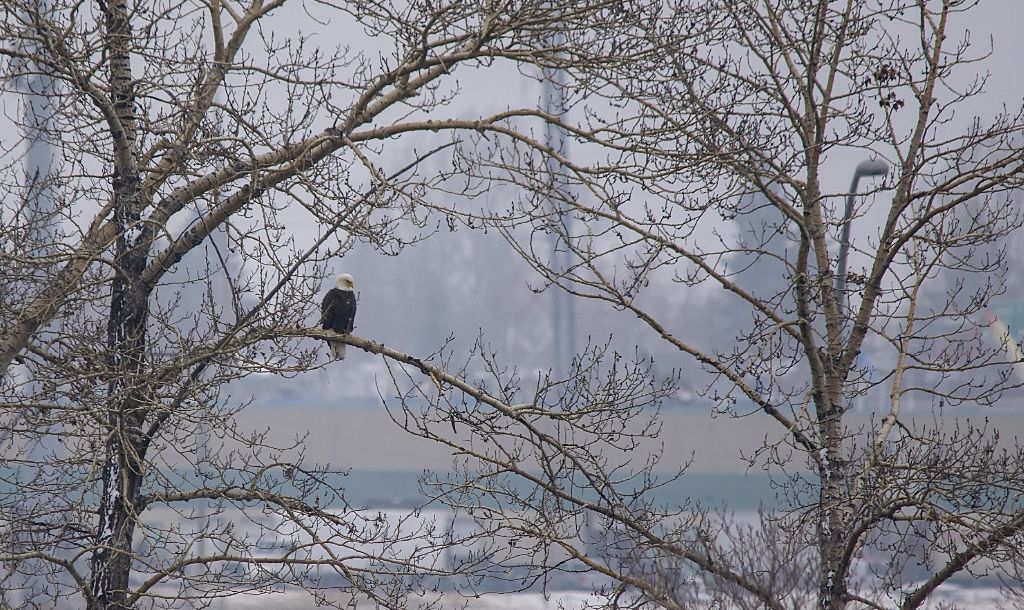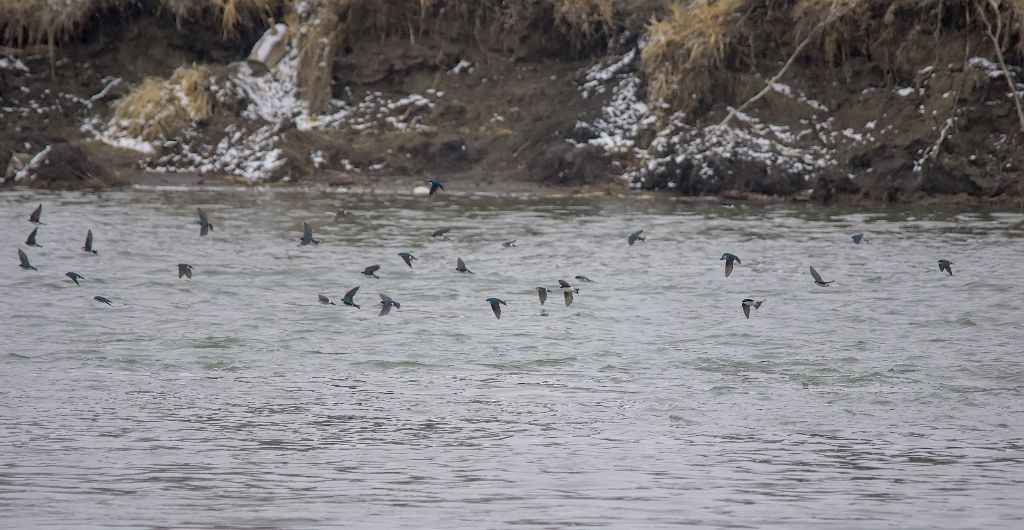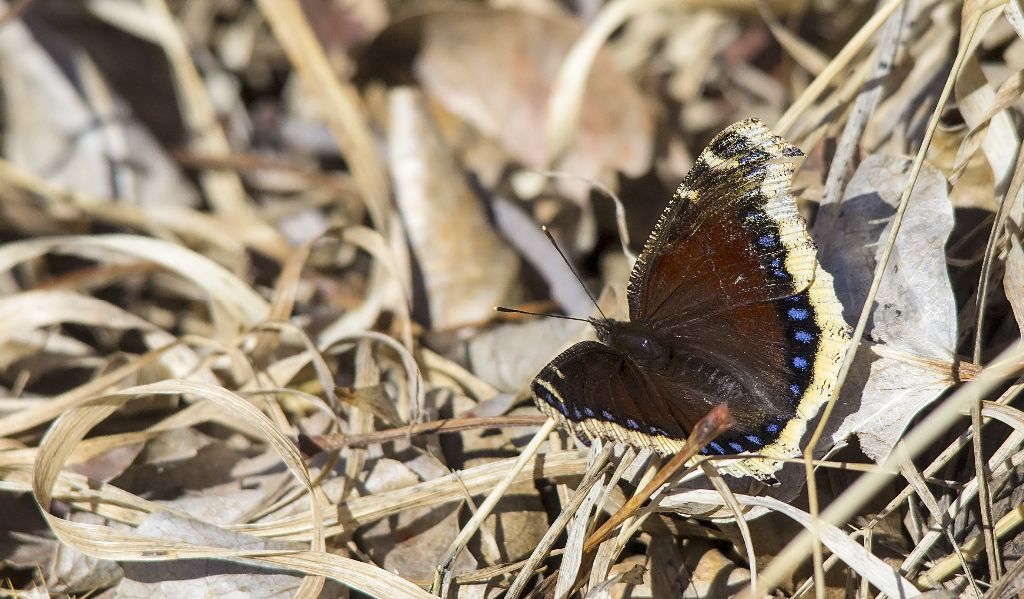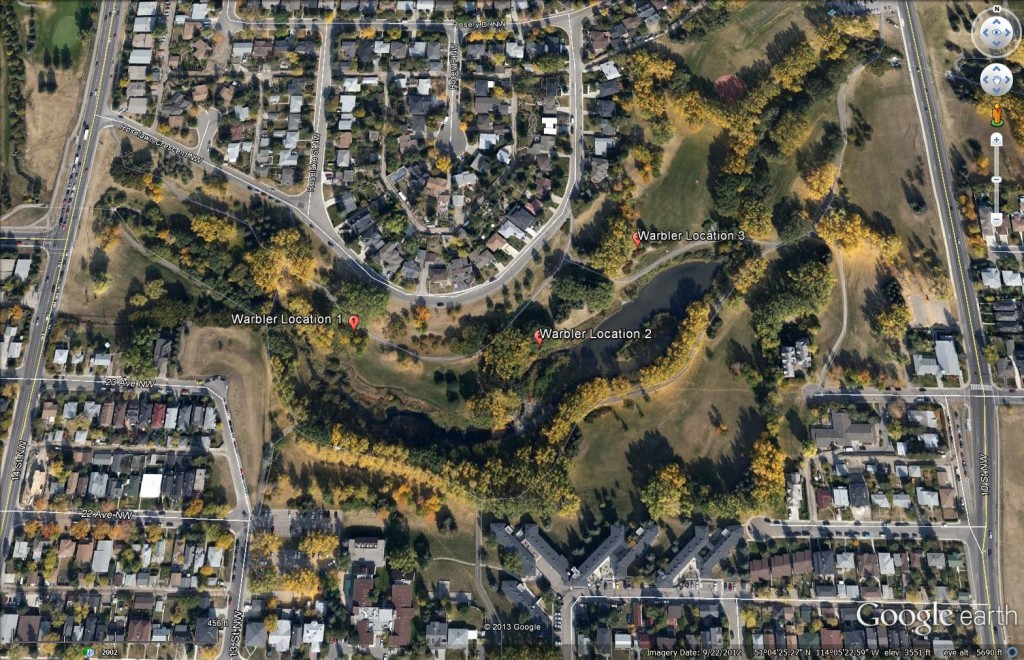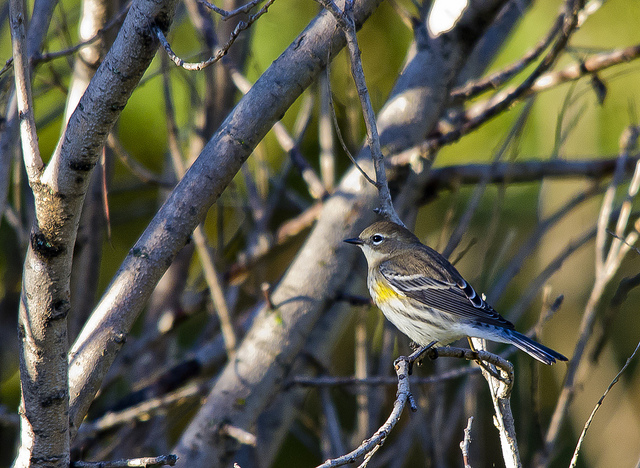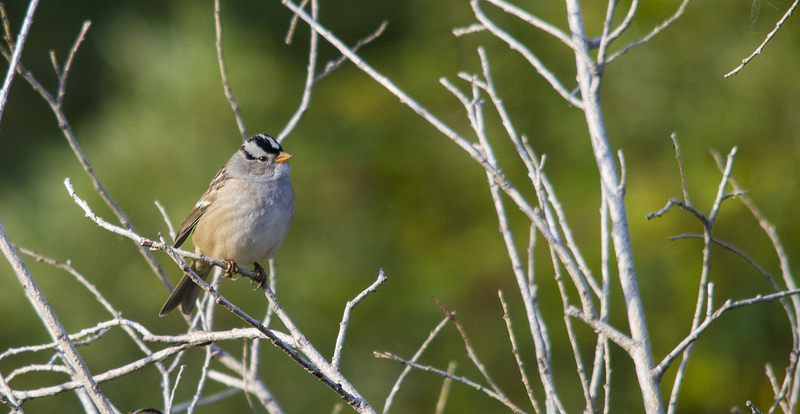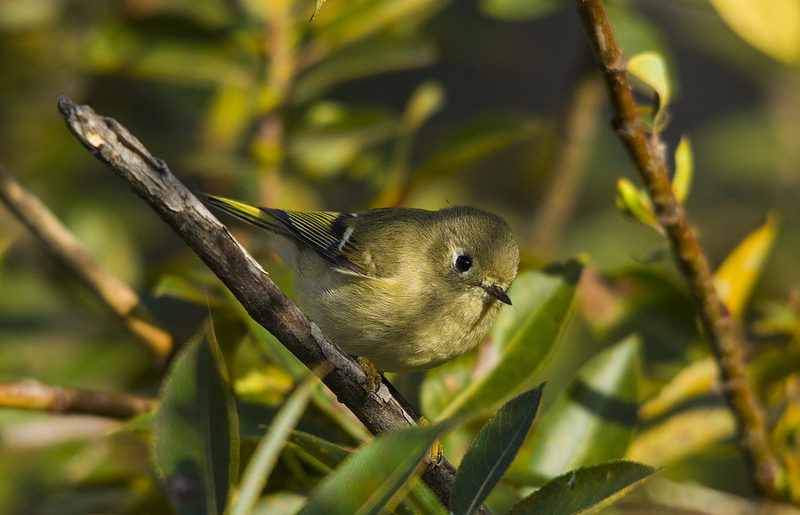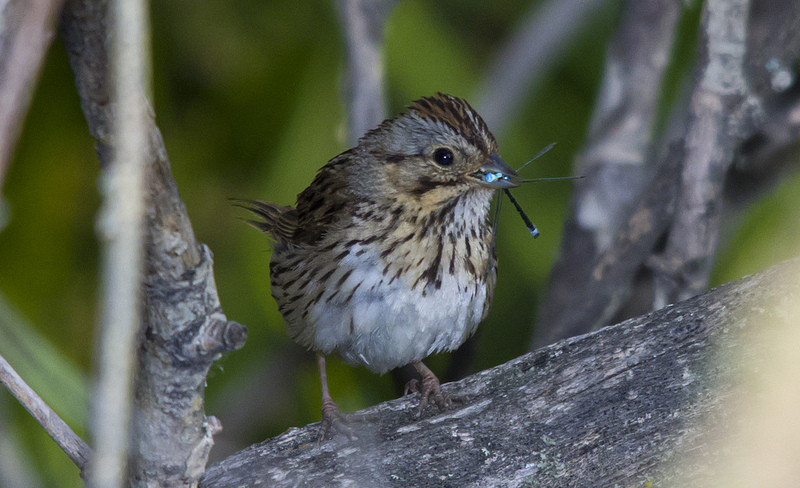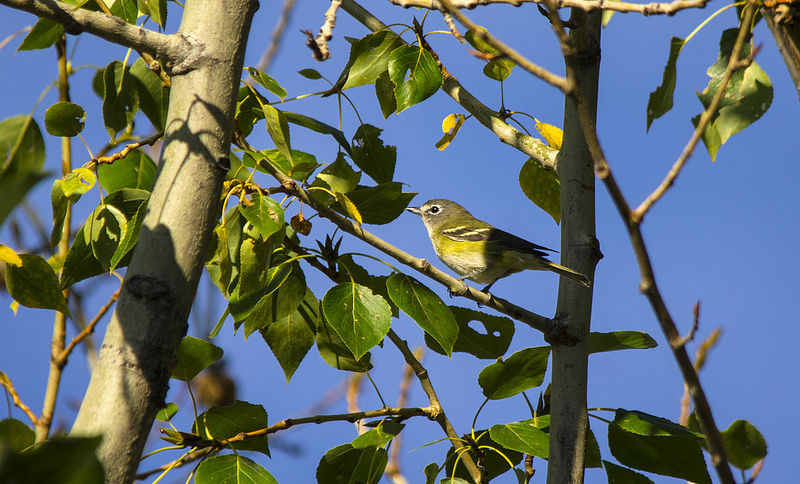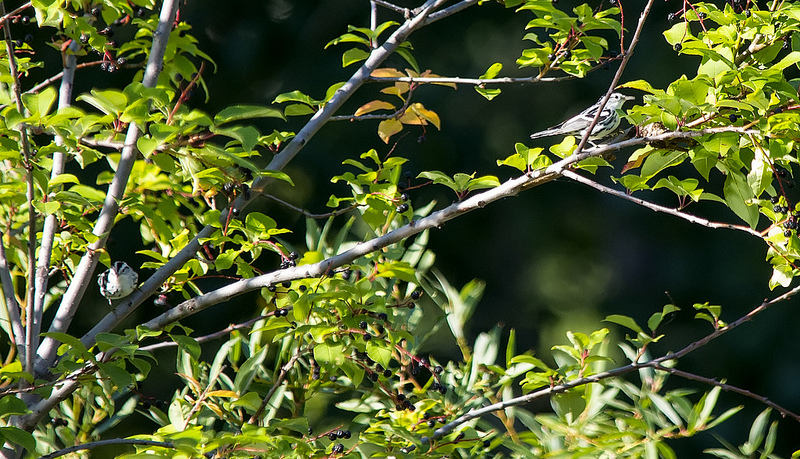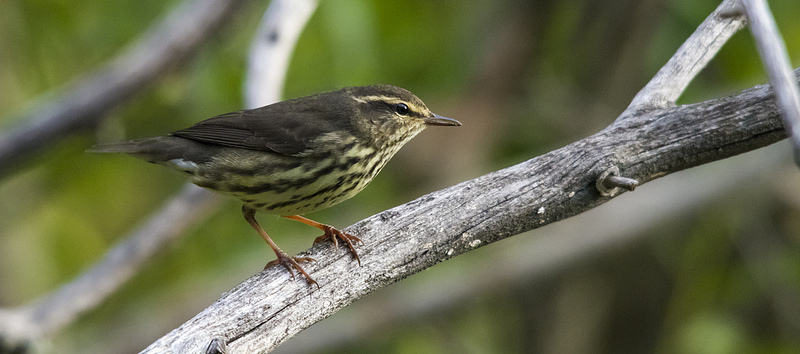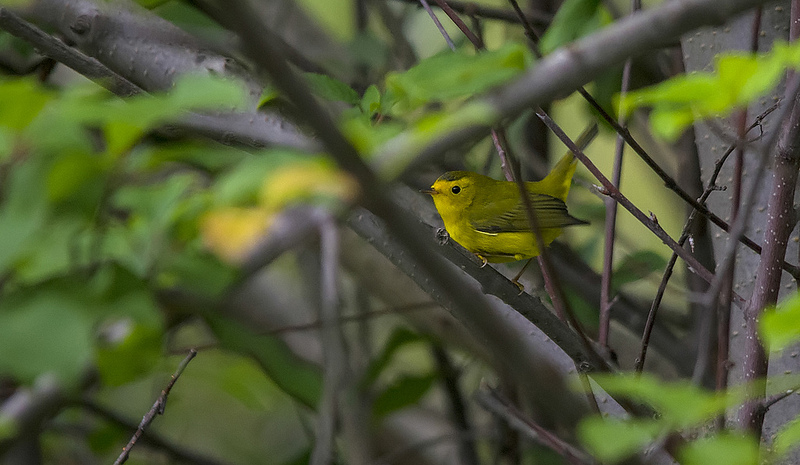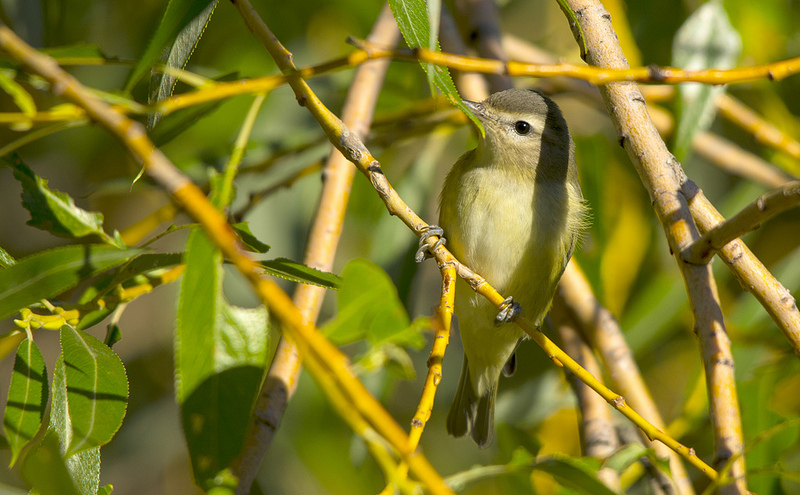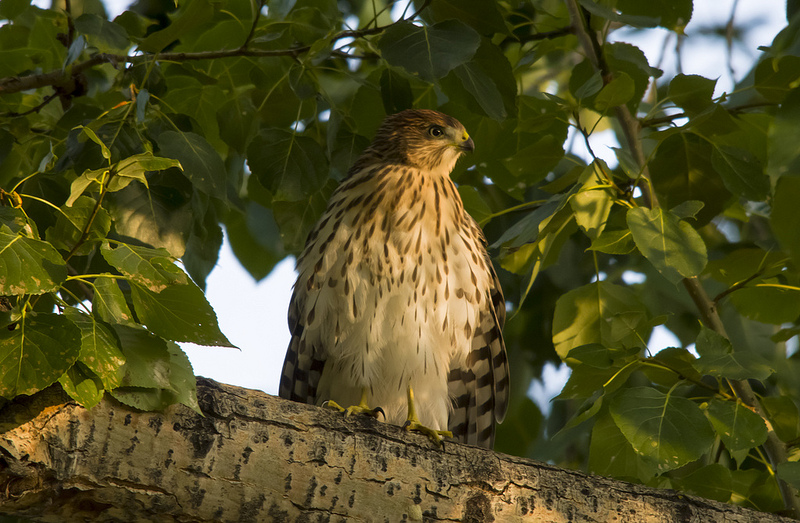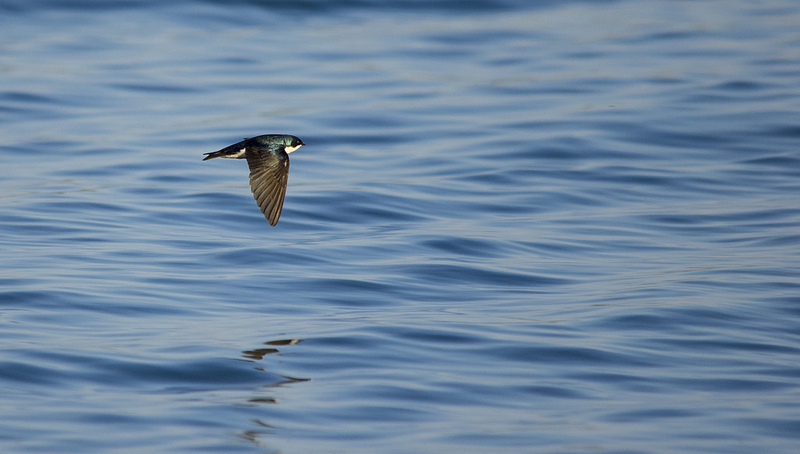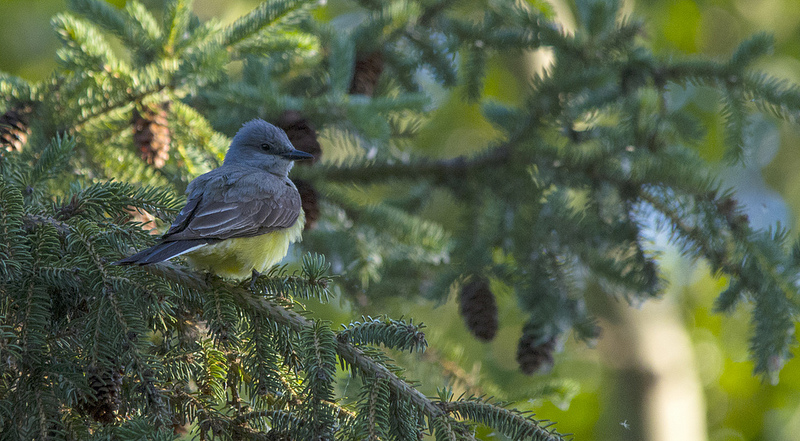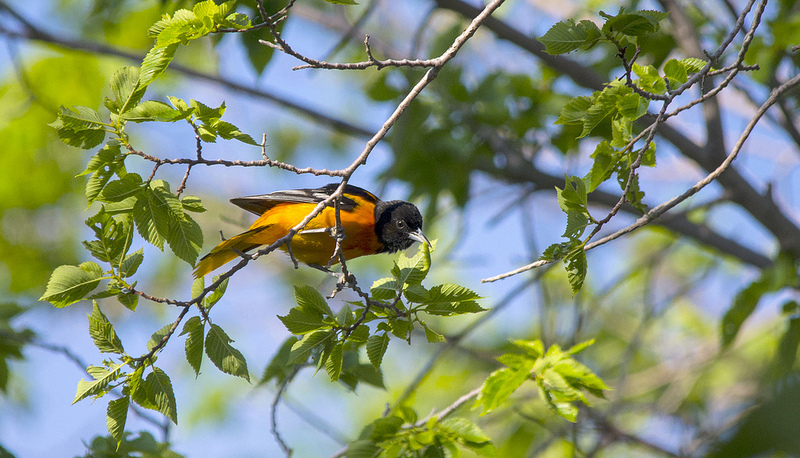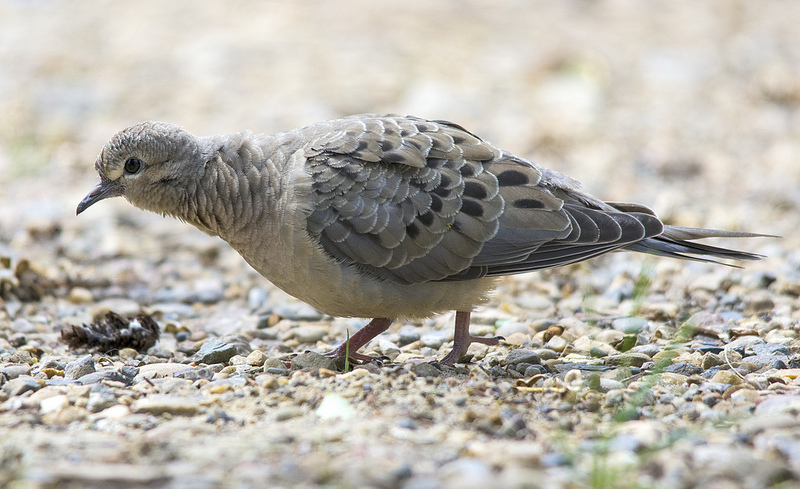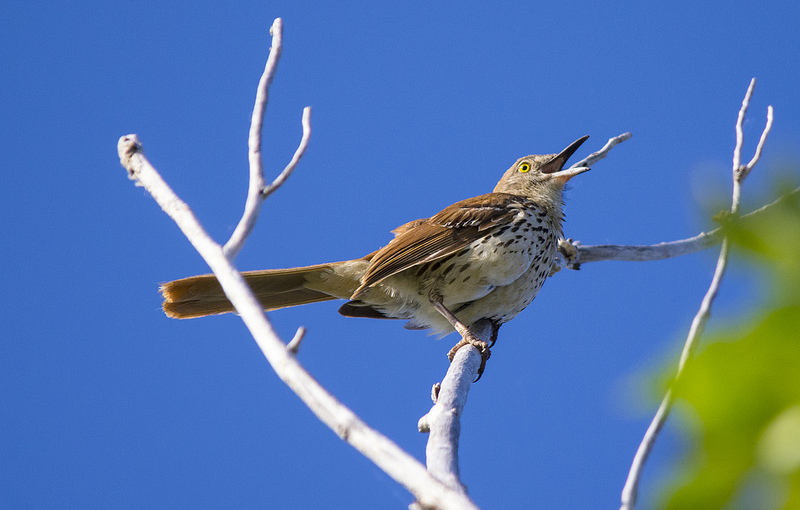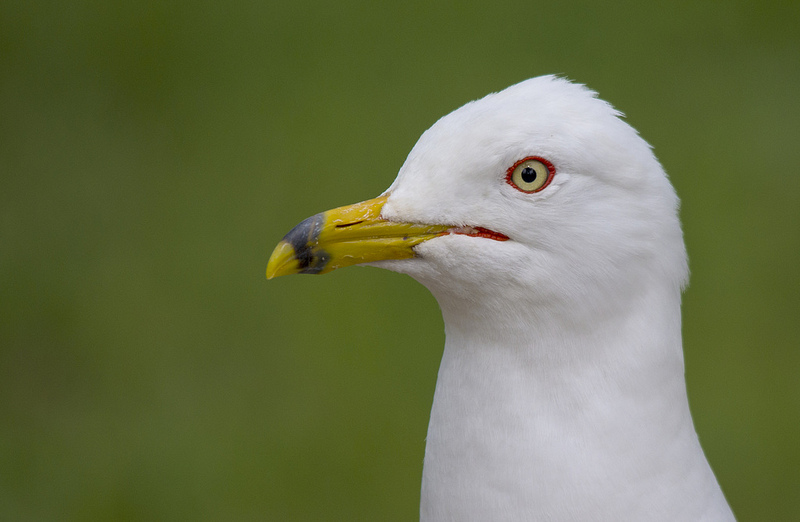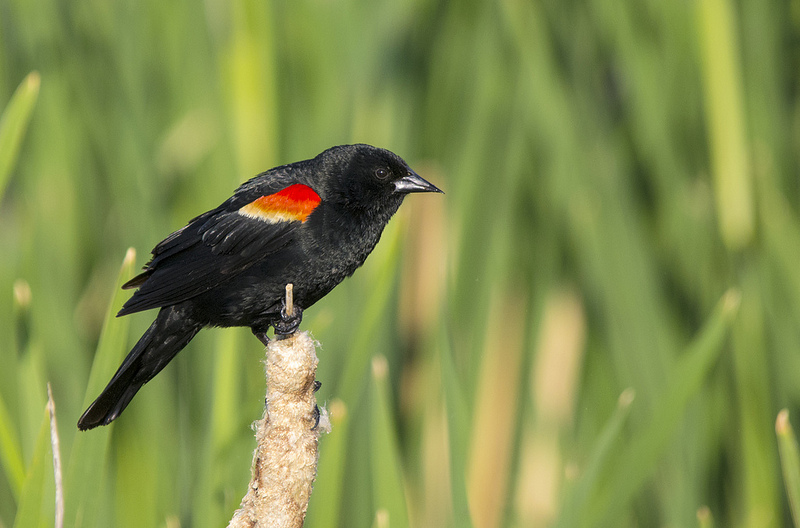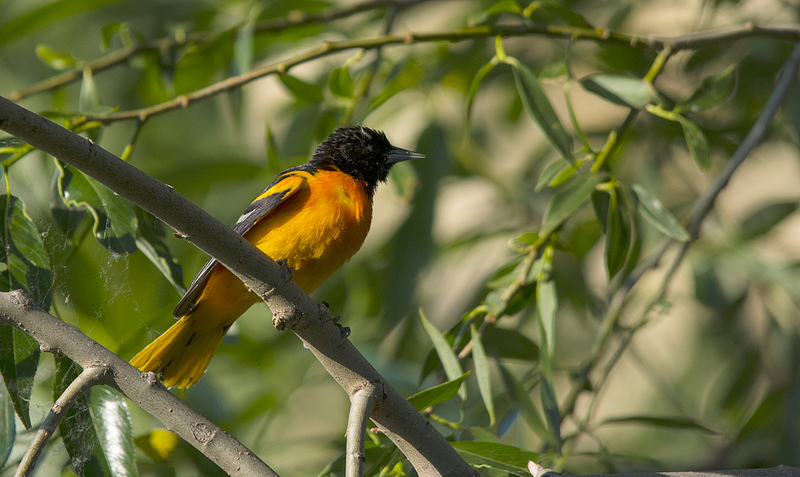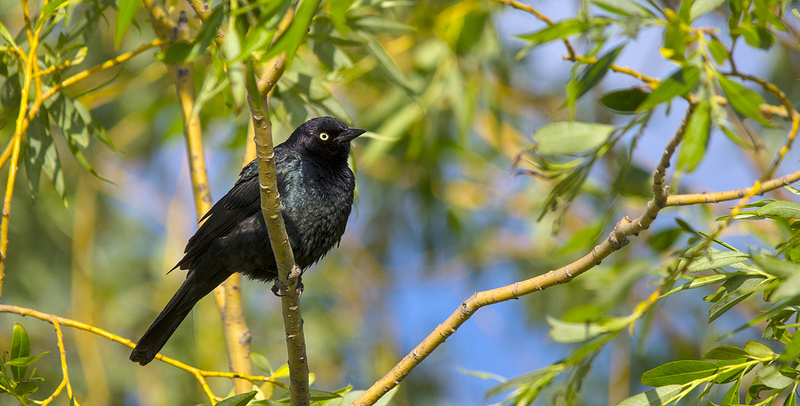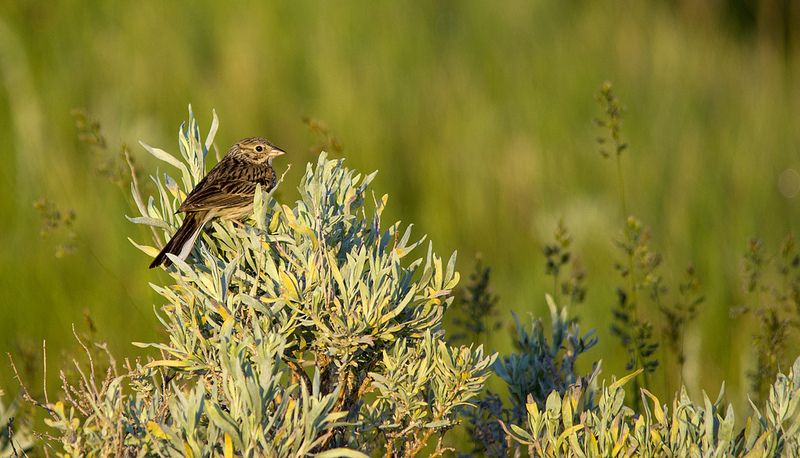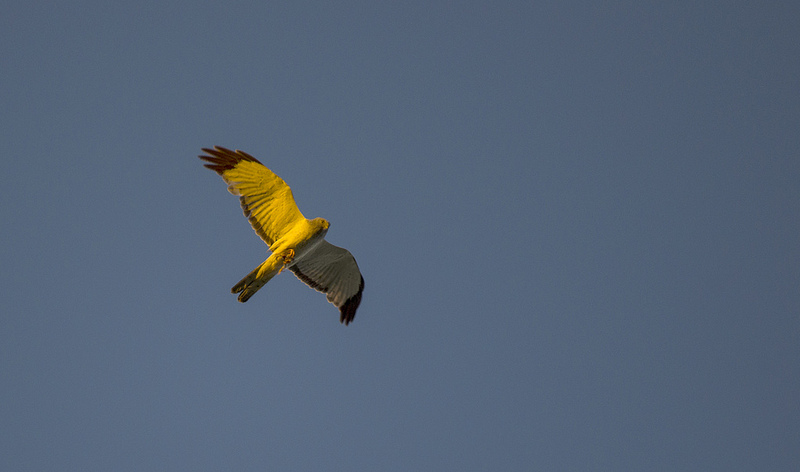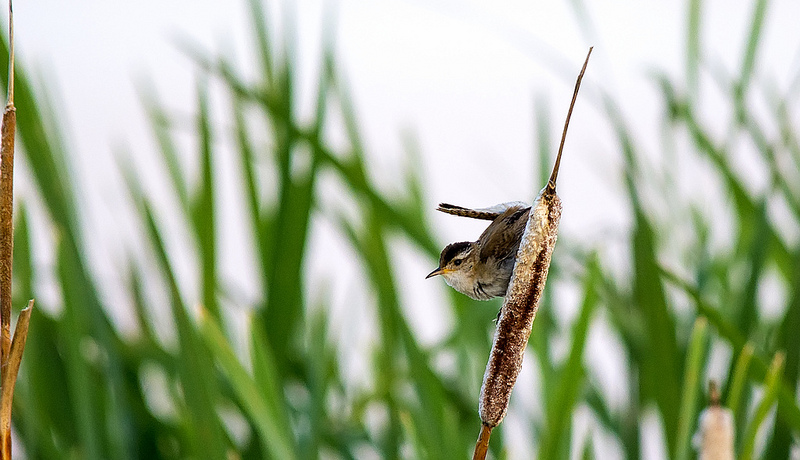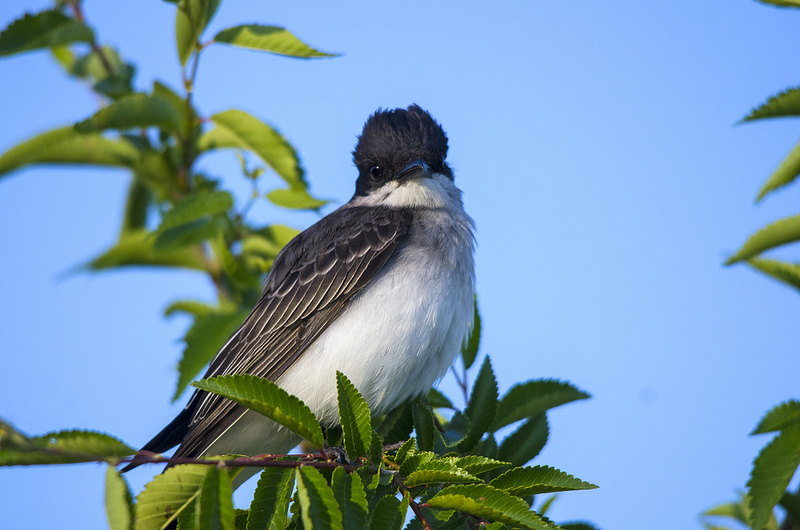Posted by Dan Arndt
Two weeks ago our group visited Bowmont Park, one of the few parks we often visit in the northwest quadrant of Calgary with the Friends of Fish Creek birding courses. It’s a bit of a special park, as it borders on the Bow River, but also a gravel quarry which is home to a pair of Osprey in the summer, a few small ponds, and a south facing slope allowing for a wide variety of songbirds.
This was the first week of outings where Yellow Warblers were the most visible. All spring and summer long, these little yellow fireballs will be singing all over the place until they manage to find a mate and raise their young. They’re really quite fun little guys to watch, and it’s always nice when they’re so easy to photograph, like they were that morning!
I mentioned the Osprey nest earlier, and this is one area where Enmax has set up an Osprey platform to prevent the Osprey from nesting inside the gravel quarry on the power lines. When we rounded the corner to check out the nest, we were greeted to this sight:
The platform had been taken over by a family of Canada Geese, but thankfully the Osprey had found another location to nest nearby. We walked over to the river a little before coming out underneath the Osprey nest, and found this Tree Swallow picking up nesting material right off the pathway.
On our way out to the main pathway, we spotted this Clay-colored Sparrow finishing up his shift at the gravel quarry and heading out for the day. They’re such industrious little workers! This was just after 8:00 in the morning and already he’d put in a full day of work.
Speaking of hard workers, this Osprey was taking trips to and from the new nest all morning, each time taking more and more branches in to build up the nest to an appropriate size, wedging them into the nest each time.
The pond at the back of the quarry which is usually unbelievably productive turned up next to nothing for us. It seemed rather unusual, so we headed further up the north slope, and found this perched Swainson’s Hawk waiting for us up there.
While we had some good looks at a few birds on the northwest hill, we had much better looks at them a bit later on, but thankfully we did manage to get a nice close look at a Northern Rough-winged Swallow on the river near the pathway on our way back. These birds can be somewhat hard to find around the city, but often along the Bow River.
We gave the pond a second chance to redeem itself, but sadly it was just as empty as it had been on our first visit, so we walked along the back end of the quarry and were treated to another great view of a male Yellow Warbler singing his heart out.
Our last good bird of the day was a lone Gray Catbird, of which we had seen a few earlier in the day but at a bit further distance. This beautifully drab bird was singing his heart out over and over again from the aspens and willows nearby. The cinnamon undertail and jet black cap are the only real splashes of color on these birds, but their song is unmistakable.
And that was another great week of birding. Have yourself a wonderful week, and good birding!
